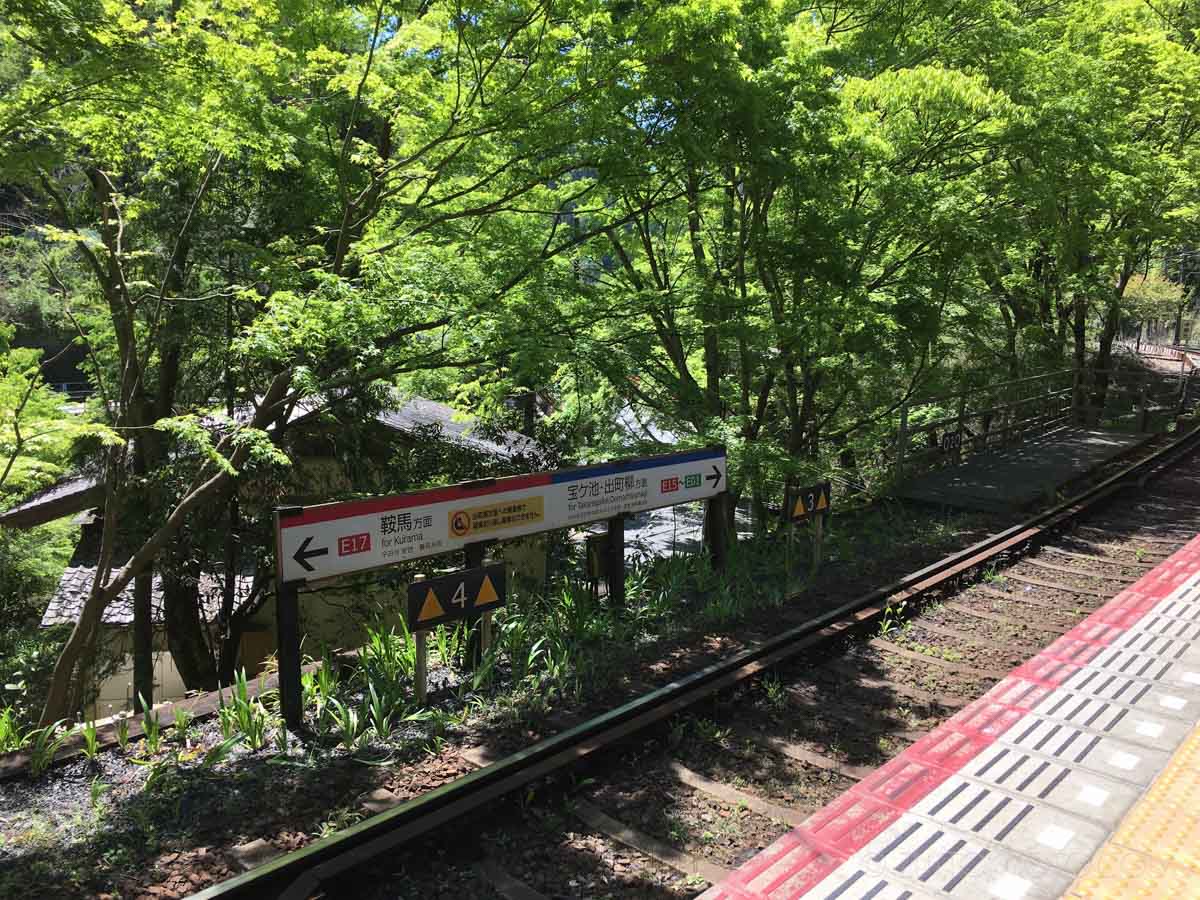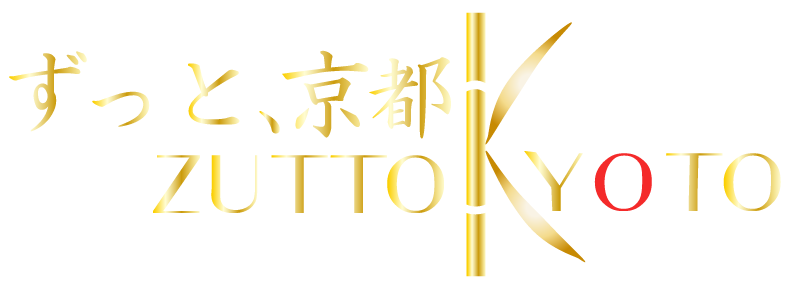Kurama Temple & Kibune Shrine Course
I will show you the course that goes around Kibune from Mount Kurama in the Rakuhoku area of Kyoto.
It is a hiking course from Mount Kurama to Kibune, which is said to be the strongest power spot in Kyoto.
Mt. Kurama is located in Kurama, Sakyo Ward, Kyoto City, and the whole area of Mt. Kurama is the site of Kurama-dera Temple.
It is said that an emissary descended from Venus 650 years ago, and Minamoto no Yoshitsune (Ushiwakamaru) met Tengu and practiced asceticism there!
While hiking, you can visit historical sites related to Mt. Kurama, Minamoto no Yoshitsune.
[Two transfers.]
Take the JR Nara Line “Kyoto Station” for Nara and Joyo.
↓
Get off Tofukuji Station, after that 1 minute walk from “Tofukuji Station”
* After exiting the ticket gate, the train is connected to Keihan Railway within the station premises.
↓
Take the Keihan Electric Railway “Tofukuji Station” bound for Demachiyanagi.
↓
Get off at the last stop “Demachiyanagi Station”.
↓
Riding on the Kurama Line of Eizan Electric Railway “Demachiyanagi Station”.
↓
Get off at the last stop “Kurama Station”.
[1 transfer]
Subway: Take the Karasuma Line for “Kyoto Station” bound for Kokusaikaikan.
↓
Get off at “Imadegawa Station” and walk for about 10 to 15 minutes.
↓
Riding on the Kurama Line of the Eizan Electric Railway “Demachiyanagi”
↓
Get off at the last stop, “Kurama Station”
Now,Let’s go to Mt. Kurama (Kuramadera Temple)!
This time, I transferred to Eizan Electric Railway by Keihan Electric Railway [Demachiyanagi Station] to go to [Kurama Station].
The Eizan Electric Railway is a convenient train for sightseeing in the Rakuhoku area (Mt. Hiei, Kibune, Kurama).
Between Ichihara Station and Ninose Station, on the way from Demachiyanagi Station to Kurama,
there is a momiji tunnel, which slows down the train and allows you to take your time looking at the scenery.
You can enjoy a variety of scenery depending on the season, such as the green momiji in spring and summer and the red leaves in autumn!

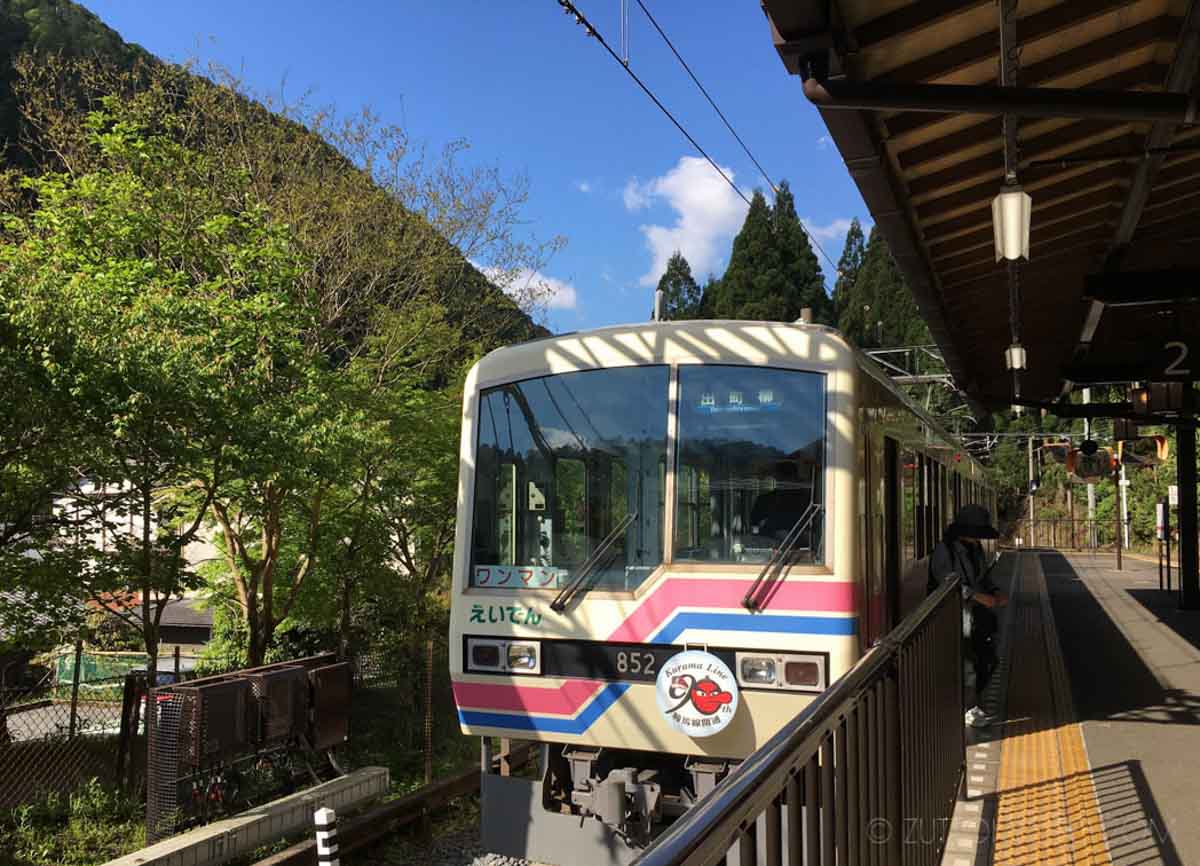
The connection at Demachiyanagi Station is direct and very convenient.
This is the train I took this time. In Eizan Densha,
there are also sightseeing trains with big windows where you can enjoy the view. Let’s get in!
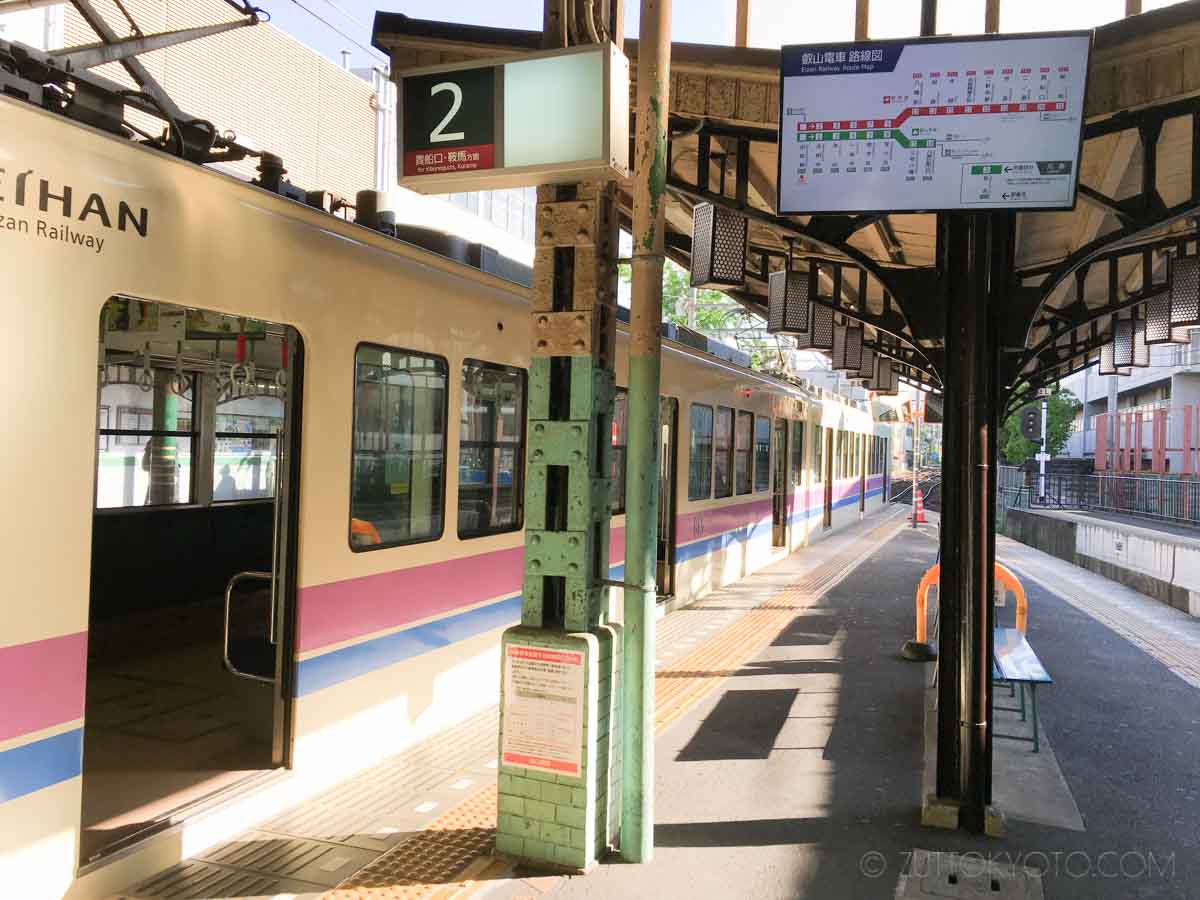
This time I visited in late May, when the fresh greenery was very beautiful.
The recommended time for hiking in early summer is before the sun rises and early in the morning.
The cool air in the morning with plenty of negative ions is very comfortable.
This is a course for beginners on hiking, but as it is a mountain road with some ups and downs,
it gets hot while walking, so please don’t forget to hydrate yourself to prevent heat stroke.
You should wear sneakers and hiking boots that are suitable for hiking.
The required time is around 1 hour to 1 hour and a half for those who are used to hiking and trekking,
and around 3 hours for those who are beginners on hiking. Arrived at Kurama Station!
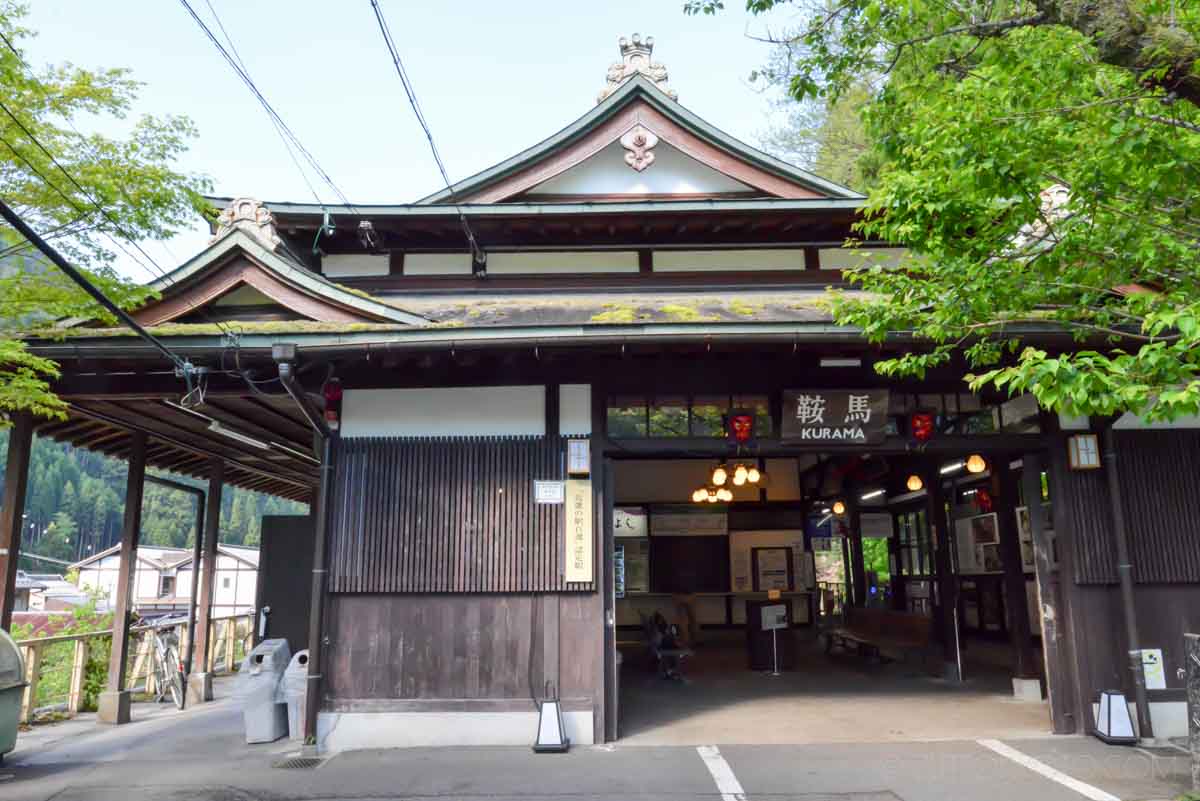
Because it was a holiday in front of Kurama Station, there were many groups who were going to hike.
Everyone was wearing trekking poles and mountain climbing shoes. For me, sneakers, clothes that are easy to move around in,
and compared to the people in the hiking group, it was not heavy equipment at all, so my heart was pounding,
but I thought it would work out somehow! A big Tengu greets you in front of Kurama Station. Big impact! It is said that Tengu (long-nosed goblin) lives in Mt. Kurama.
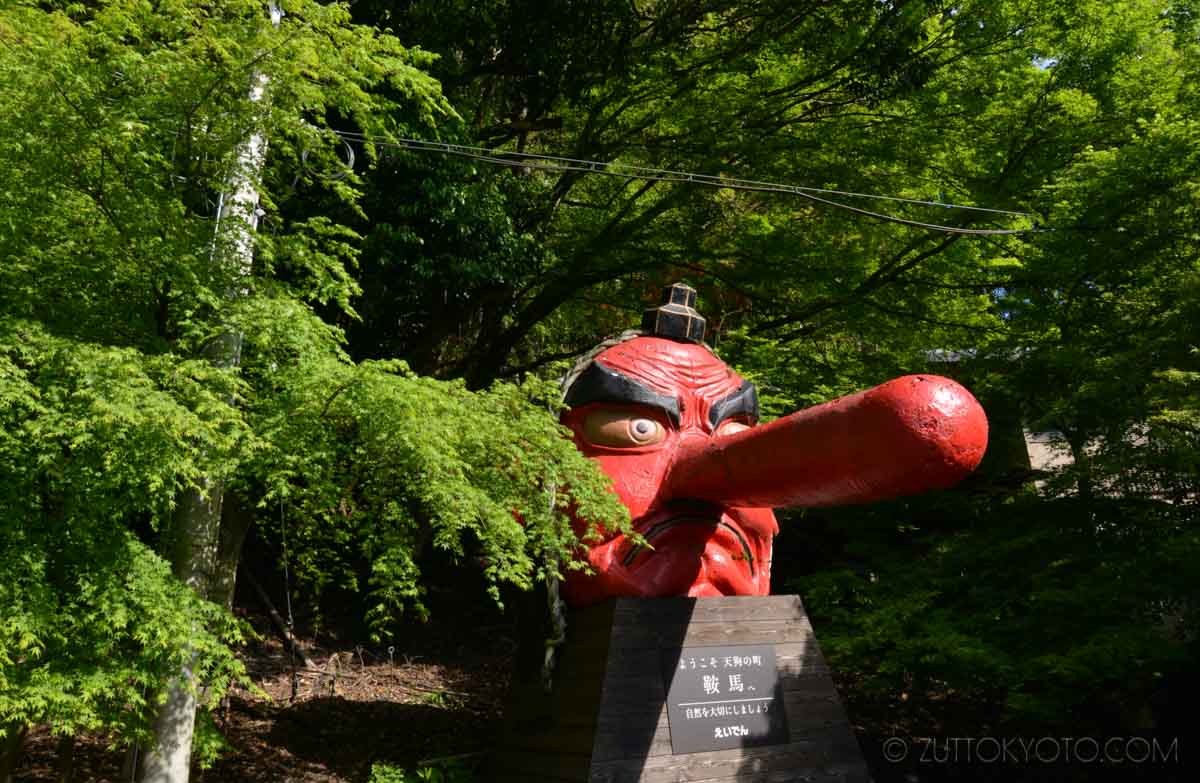
It takes about 5 minutes to walk from Kurama Station to Niomon Gate of Kuramadera.
Kurama Temple
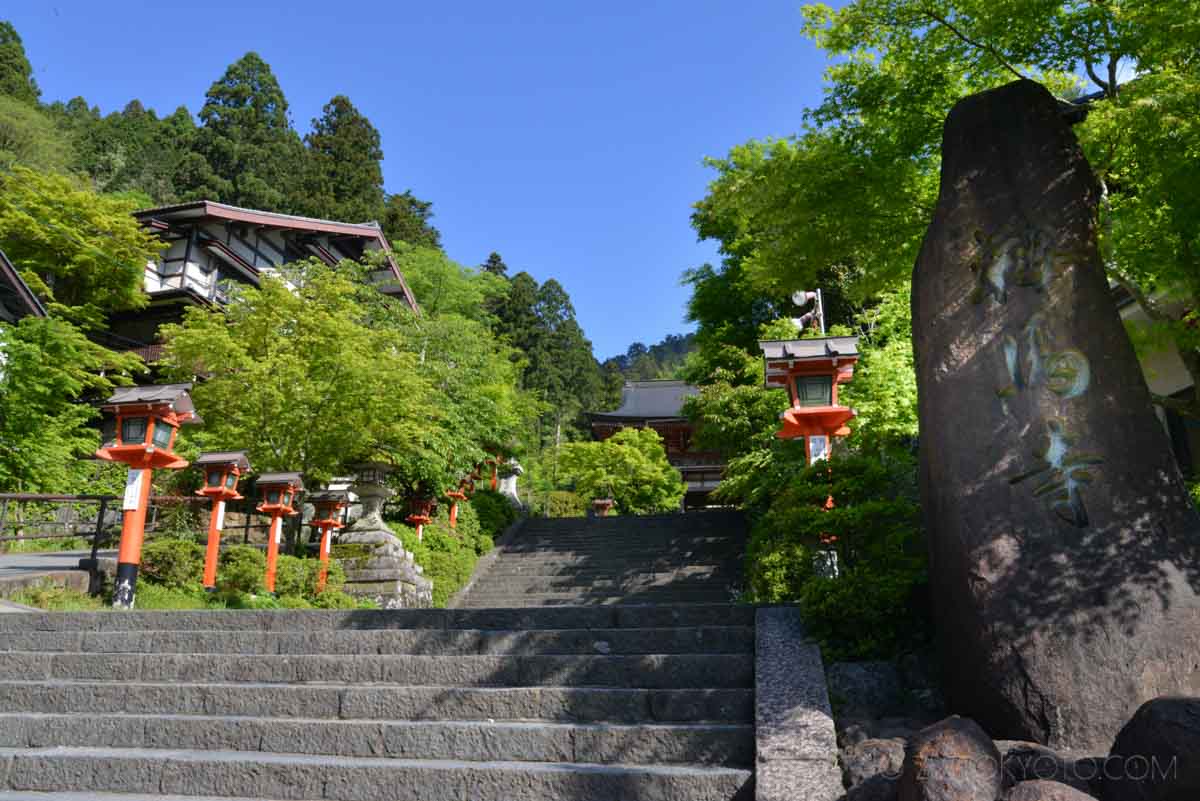
The weather is nice on this day and it is the best day for hiking.
This is the Niomon gate of Kuramadera Temple.
Kuramadera Temple (鞍馬寺) began when Gantei Shonin, a high-caliber disciple of Ganjin Wajo, who founded Toshodai-ji
Temple in Nara, worshipped Bishamonten in 770 and, in 796, Fujiwara no Isendo completed a temple complex and enshrined 1000 te Kanzeon
and it came to be called Kuramadera Temple. It has a long history of 1200 years, a legend of Tengu, and it is a spiritual place, so I felt a sacred atmosphere.

As you pass through the Niomon Gate, there is a reception desk
At the top of the mountain, you can pay the Aizan fee of 300 yen to enter the mountain.
There is a cable car to the top of Mount Kurama, so you can get there easily.
However, please note that there is a steep staircase to the top of the mountain after you get off the cable car.
If you are confident in your strength and legs, or like hiking.
You have to get off the cable car to get to Kibune before
you can walk across the mountain. Past the reception desk, you will be greeted by the Kannon statue quietly.
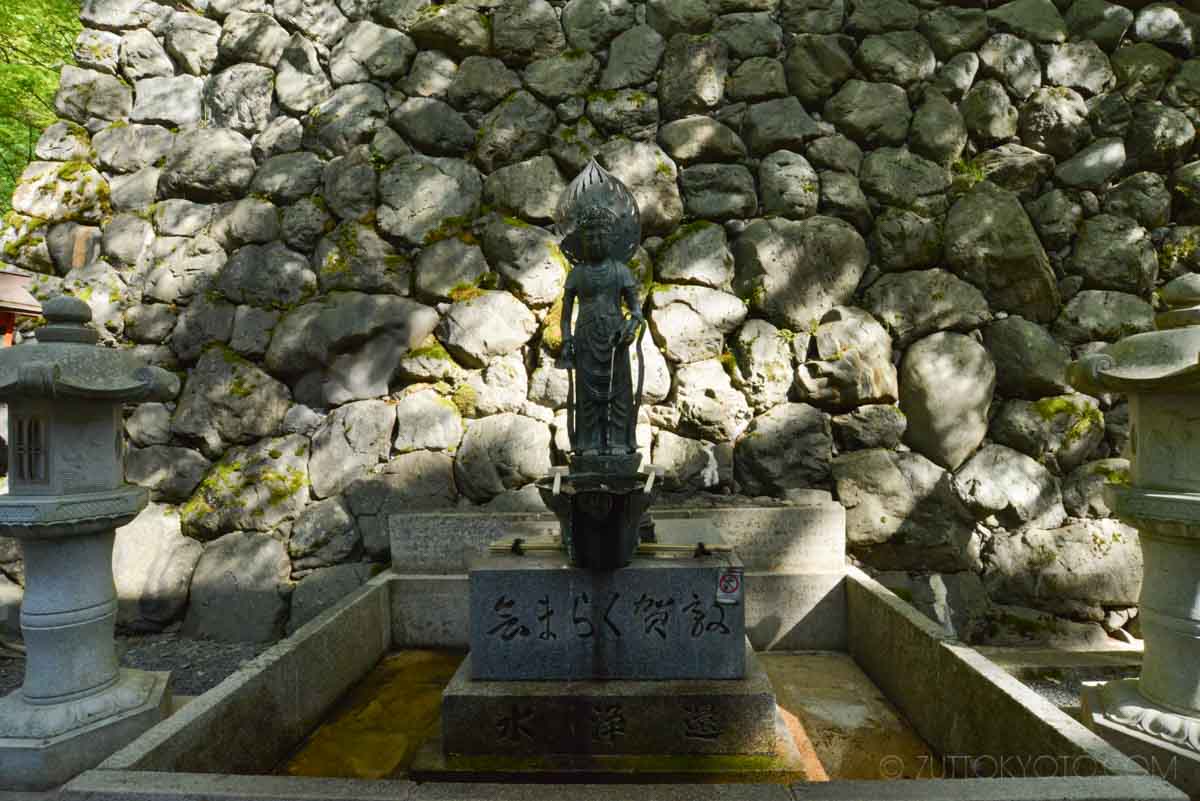
In the season of fresh greenery, the blue maple leaves are very beautiful and soothing.
Behind the Niomon Gate, there is the cable car station, Fumyoden, at the cable car station. If you want to take the cable car, please click here.
The fare is 200 yen for adults one way and 100 yen for elementary school students and younger.
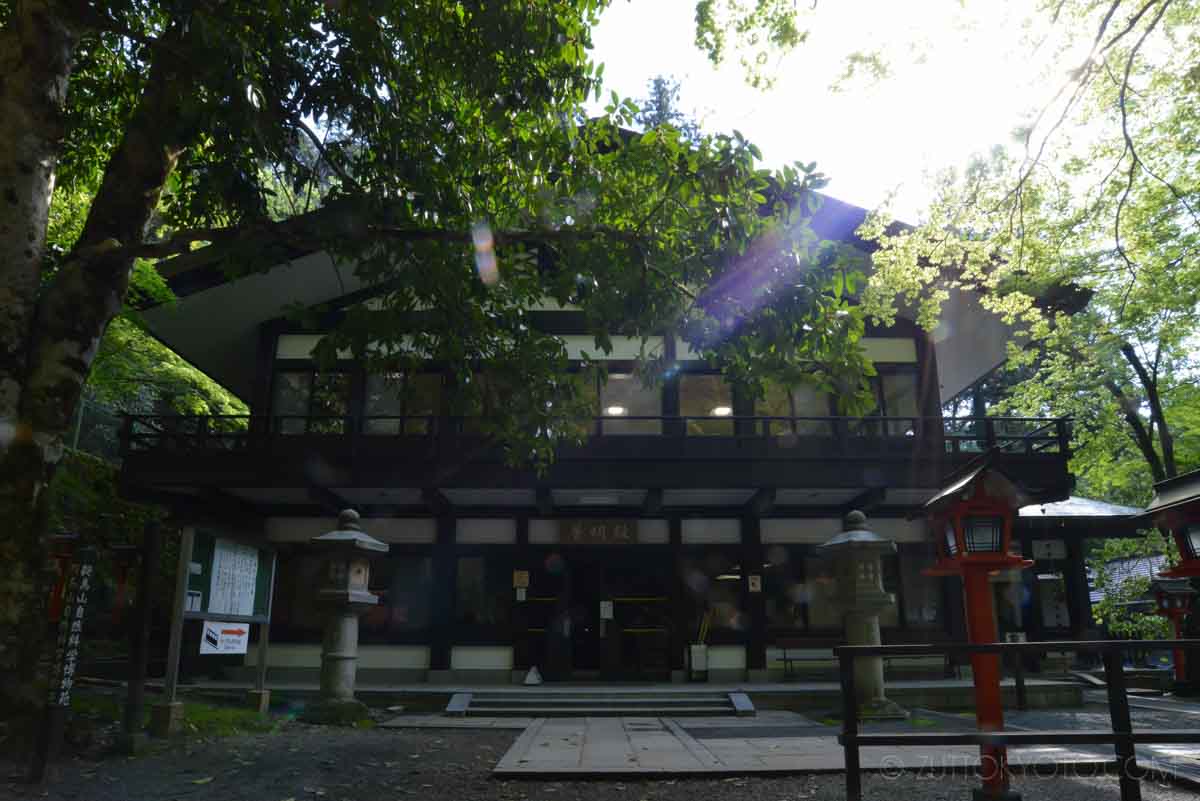
This time I’m going to walk, so we’re not going to take the cable car and continue on.
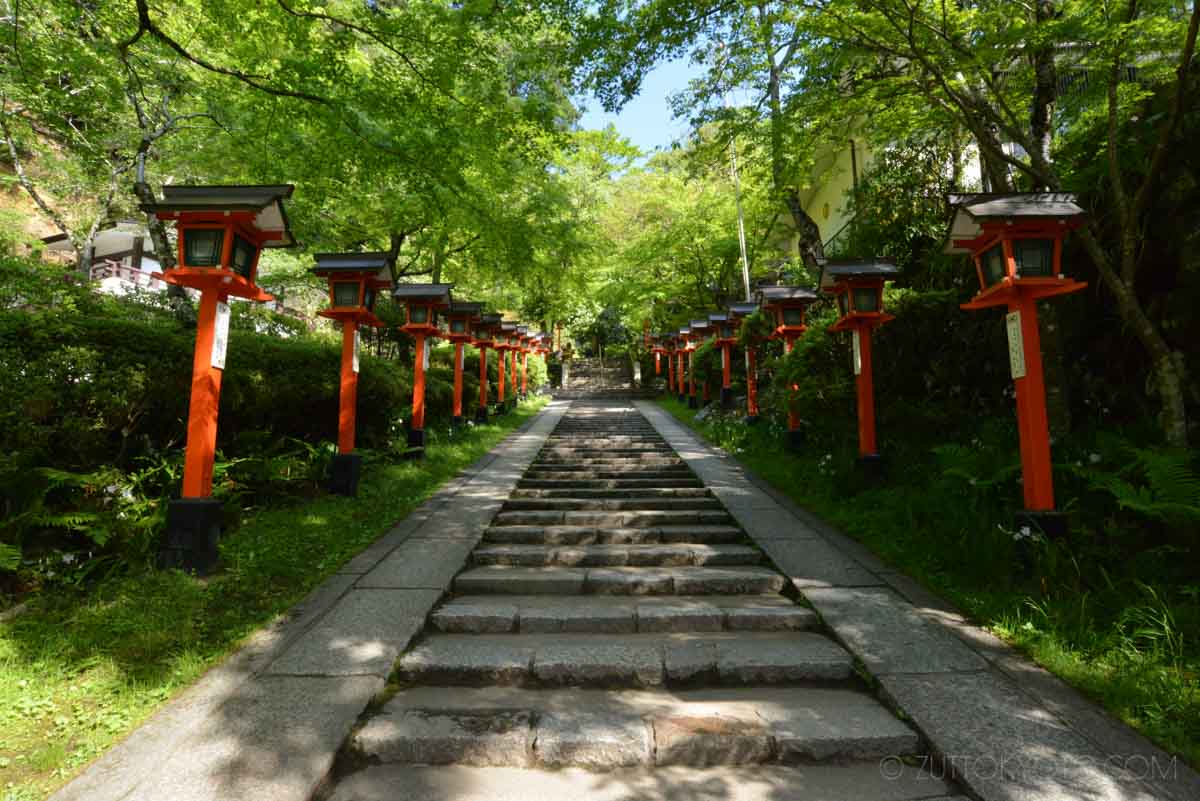
A little further along the path, you will find the Demon King’s Waterfall.
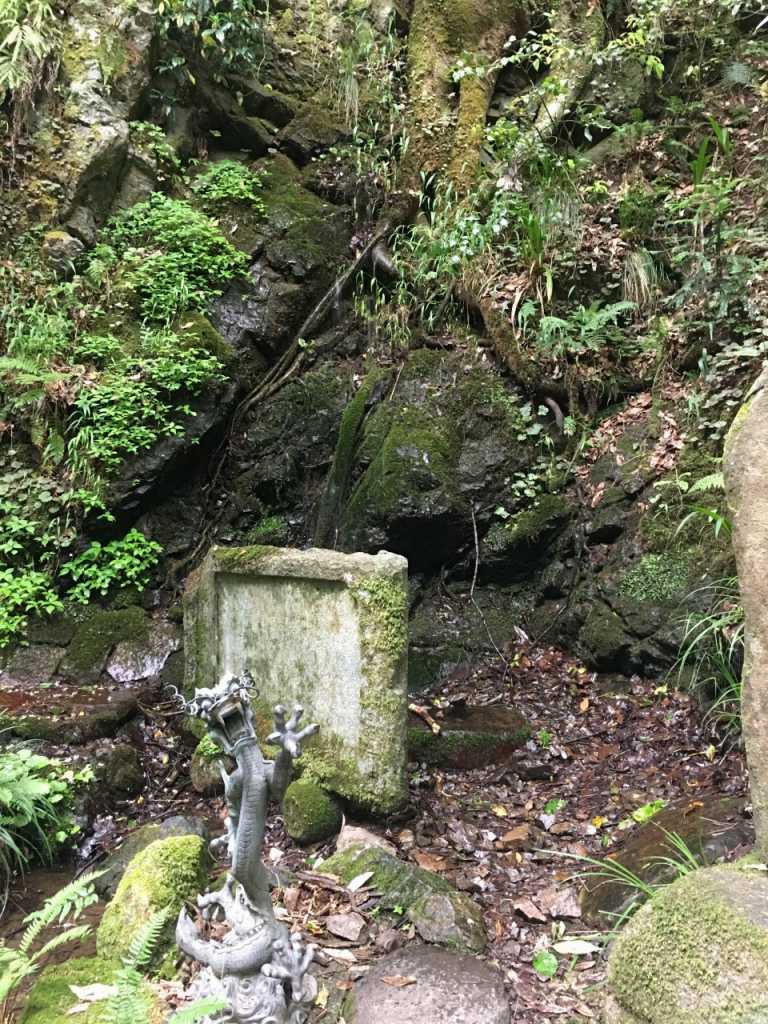
It is said that Satan descended in ancient times, and Satan is Goho Maoson(護法魔王尊).
It is said that it landed on the earth from Venus 6.5 million years ago.
I had a slightly scary image from the name of Mao, but I felt sacred rather than scary.
Further along is Yuki Shrine (由岐神社).
Yuki Shrine
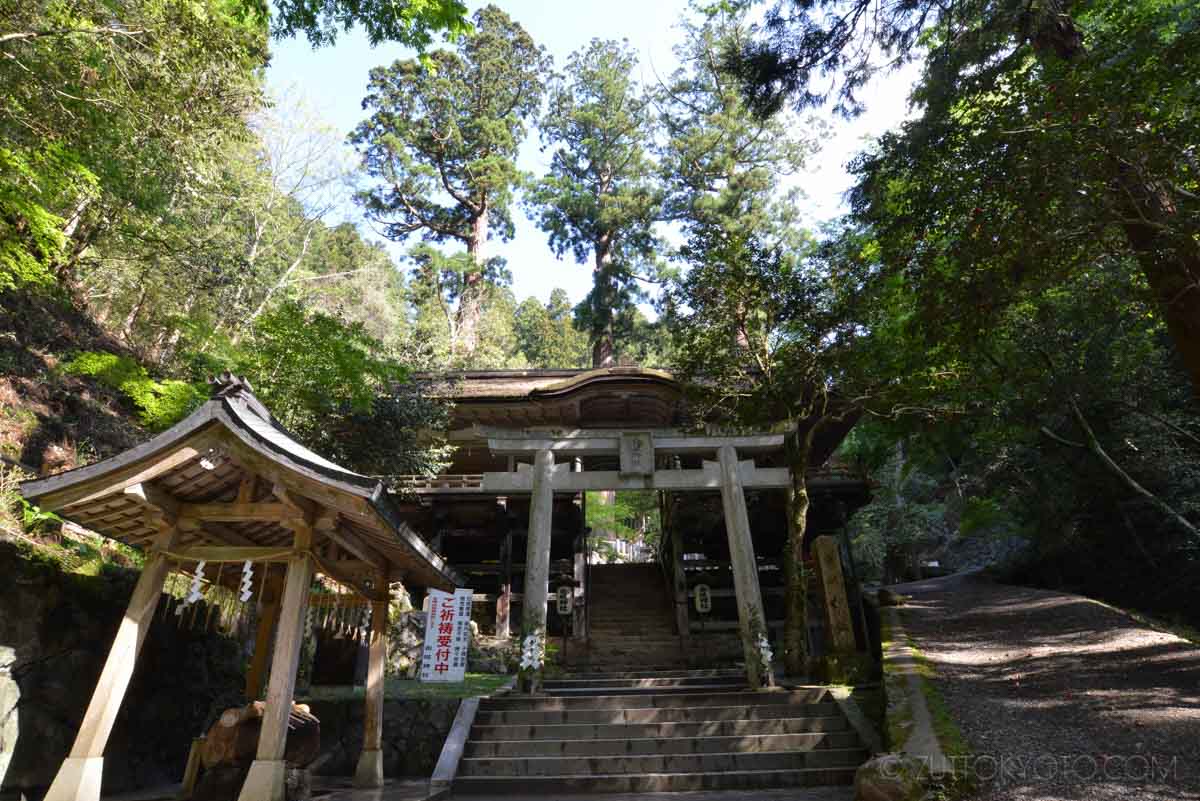
The Haiden, which is also the entrance to Yukijinja Shrine, is divided into right and left,
and there is a doma passageway in the center of the Haiden,
which has been designated as a national important cultural property as a representative building of the Momoyama period.
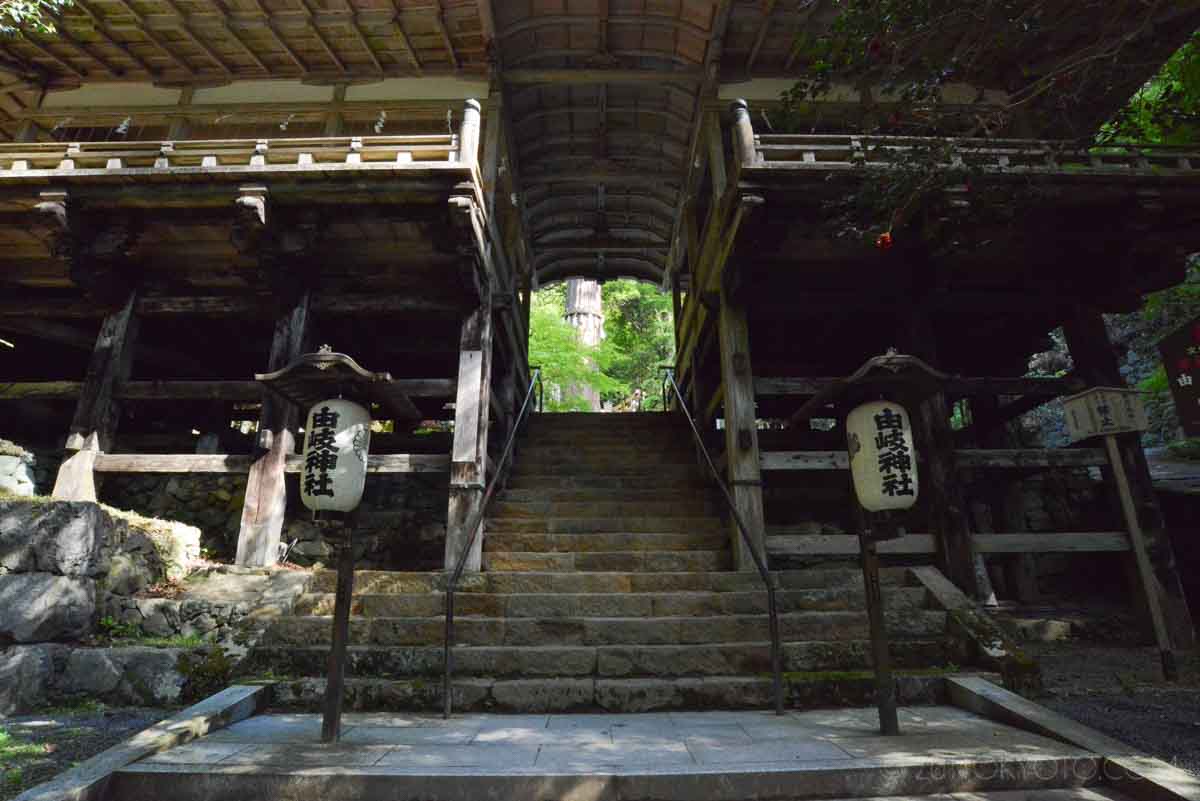
There is a big sacred tree at the foot of Yuki Shrine.
It’s hard to see in the photo. It’s very huge!
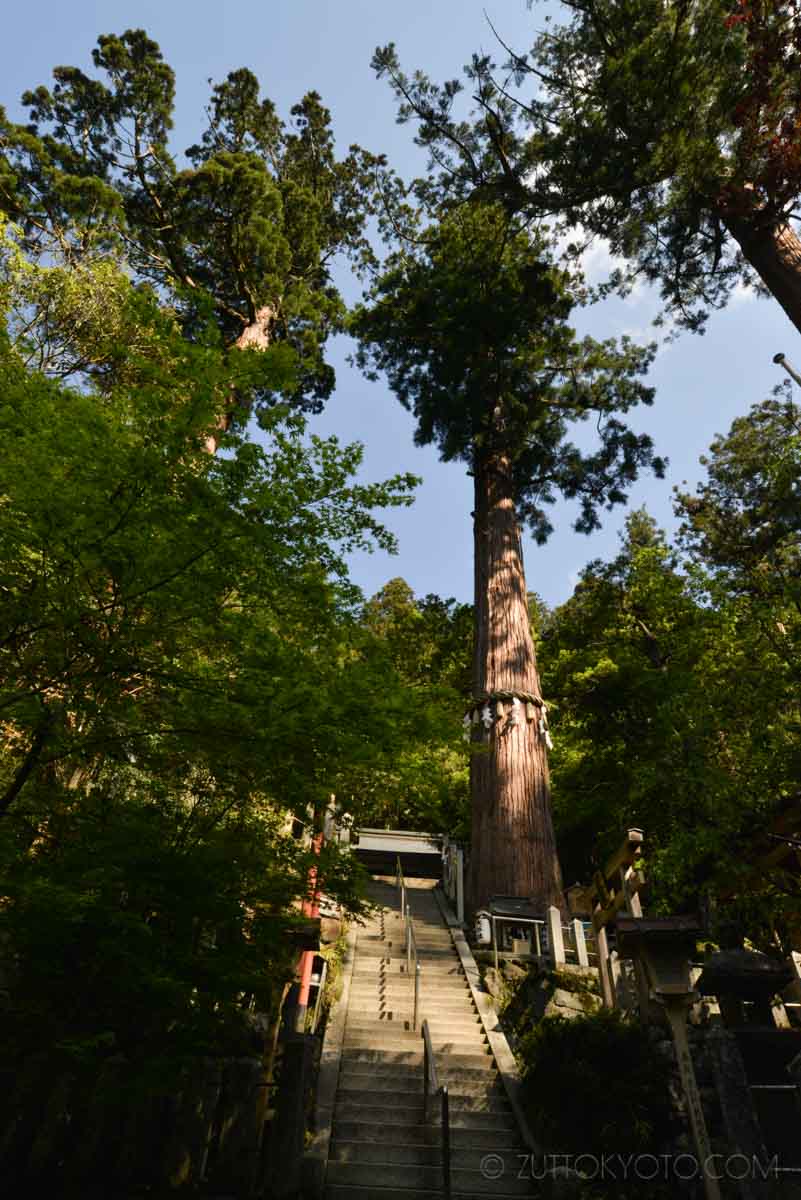
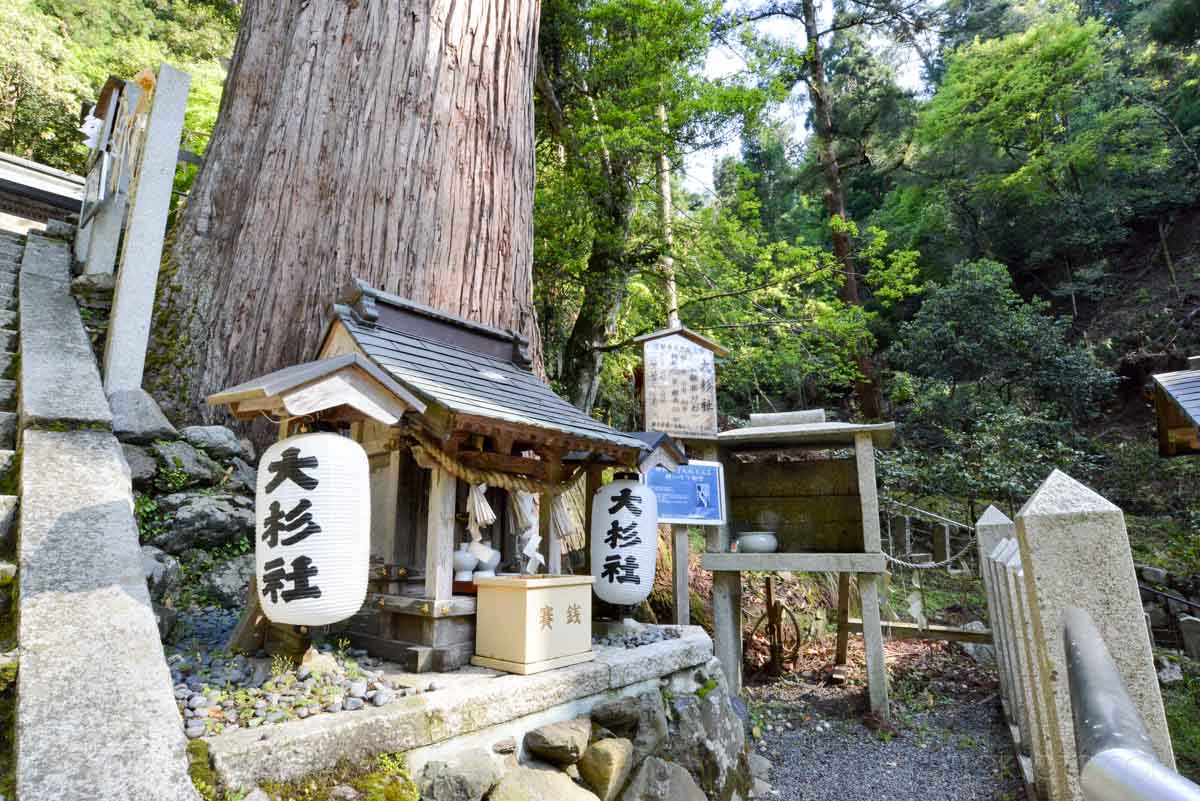
The 800-year-old 53-meter-tall tree is designated as a natural monument by the city of Kyoto,
and is affectionately called “Osugi-san”.
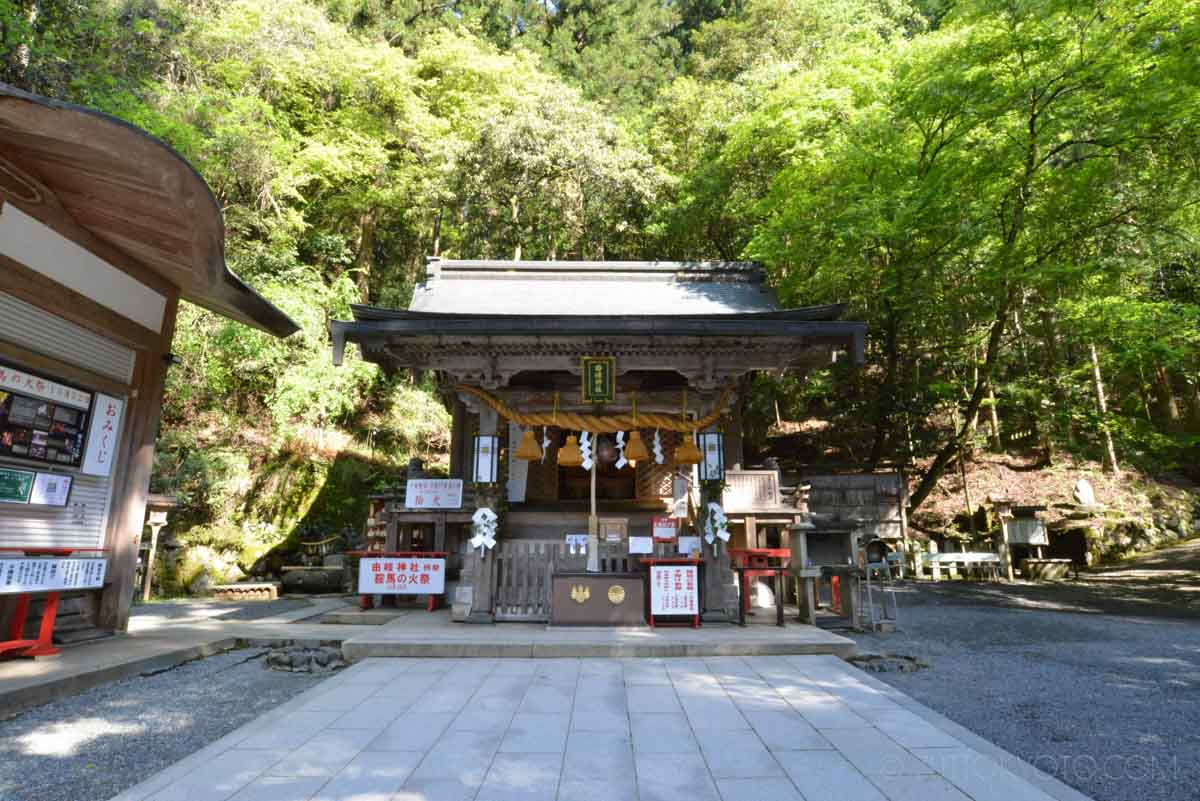
This is the main shrine. The main shrine and worship hall were rebuilt by Hideyori Toyotomi in 1607.
Yuki Shrine is famous for the Kurama Fire Festival, one of the three most eccentric festivals in Kyoto.
The Kurama Fire Festival is a unique festival held every year on October 22 in which children
and young people parade through the town carrying large and small torches.
It is said that the origin of the origin of Yuki Shrine was the transfer of Yuki Daimyojin,
which was worshiped at the Imperial Palace by the imperial edict of Emperor Suzaku, to Kurama,
which was north of the capital, for protection of the northern part of the Imperial Palace in 940.
Since I visited the shrine, I will leave Yuki Shrine.
The typhoon has brought down a large tree and I feel sorry for i
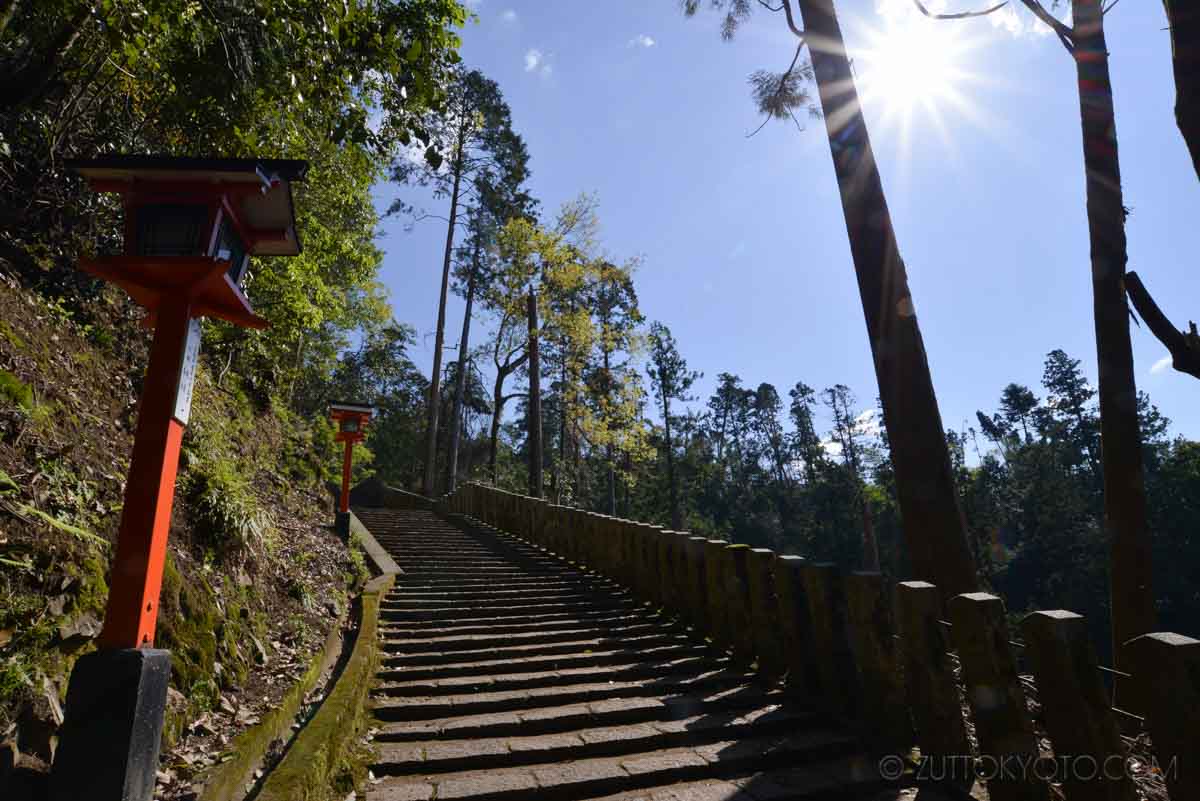
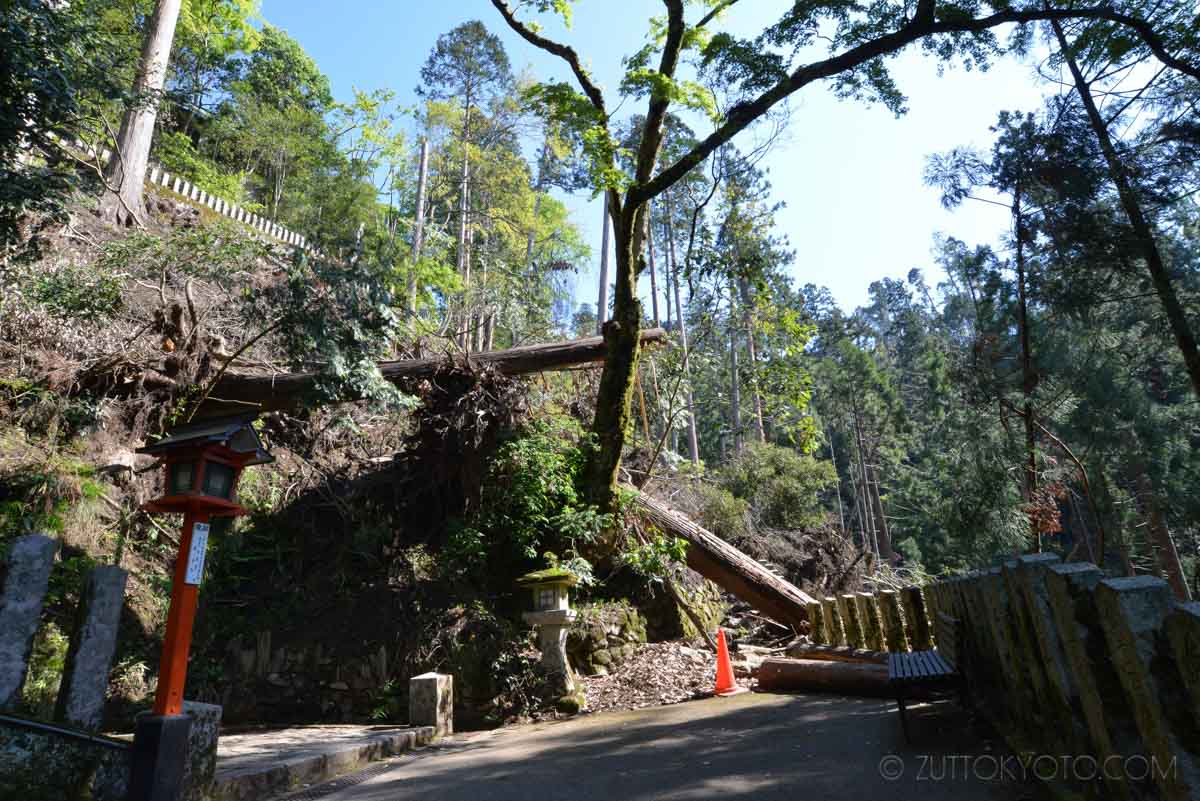
There is a junction with the entrance of the cable car ahead.
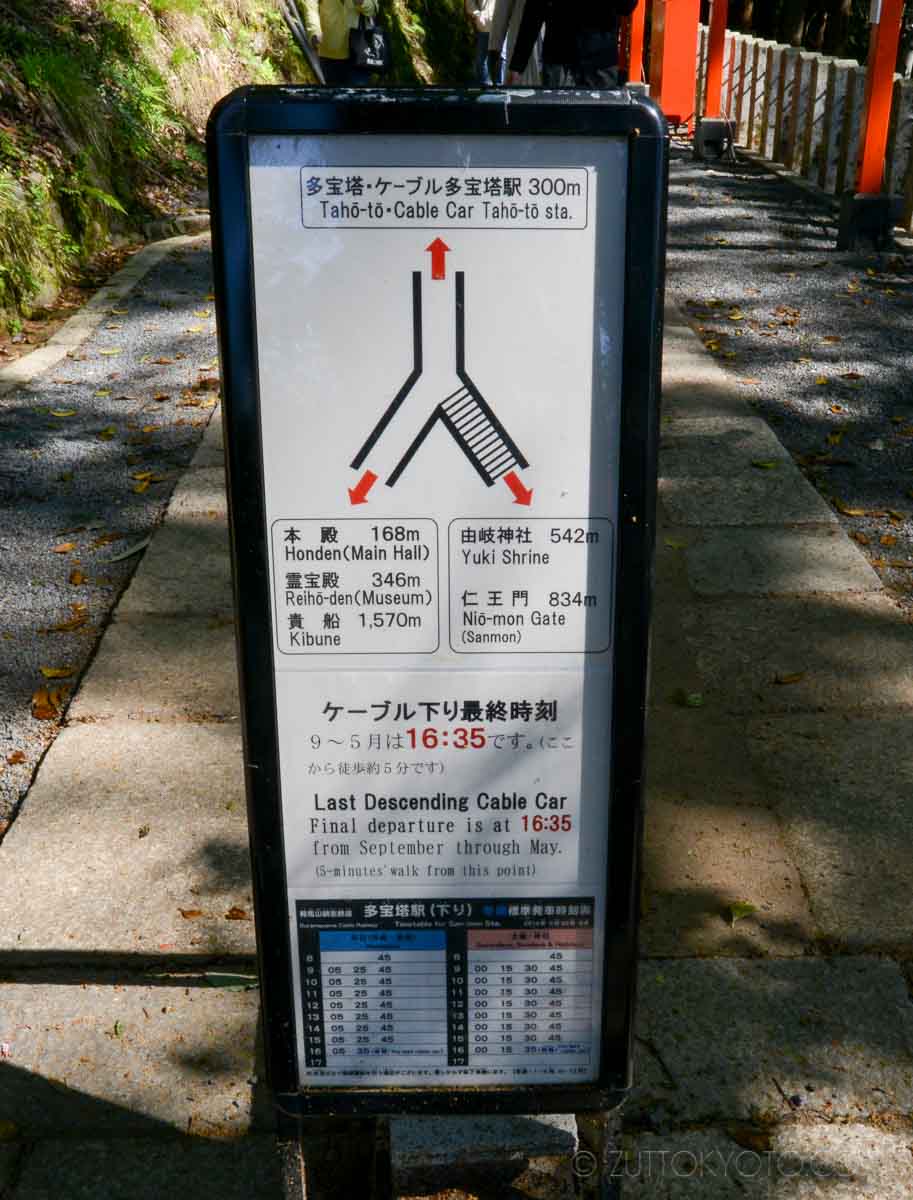
If you don’t go over the mountain to Kibune.So you can take the cable car from here again, back to Kurama Temple.
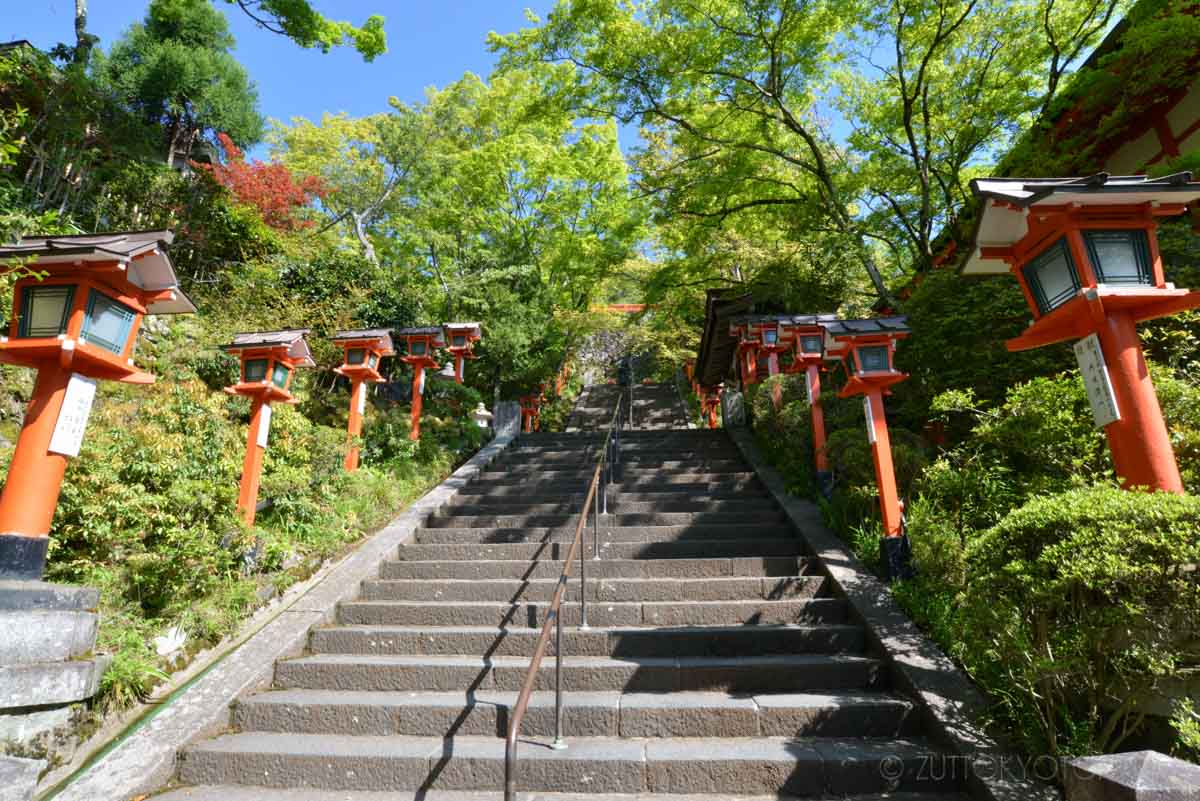
This is Kongodoko is the main hall in top of the mountain. The Kongo floor in front of the main shrine’s
main hall has a star mandala pattern representing the energy waves of
the universe and is the biggest power spot on Mount Kurama!
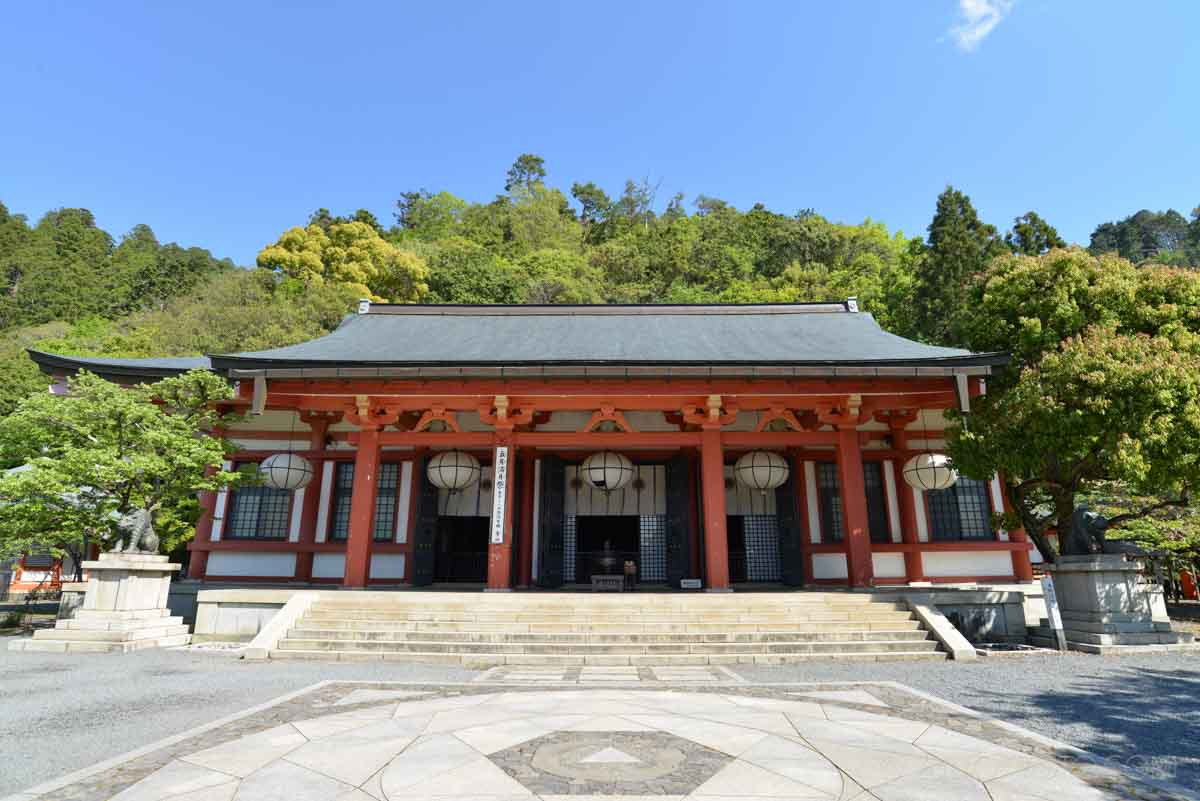
Kongodoko is the center of a circle in front of the main hall, so you can receive the power of the universe.
On this day, several people were waiting in line to stand here.
There were many people praying with their hands together and looking up at the sky with their hands open.
I also stood in the middle and received power.
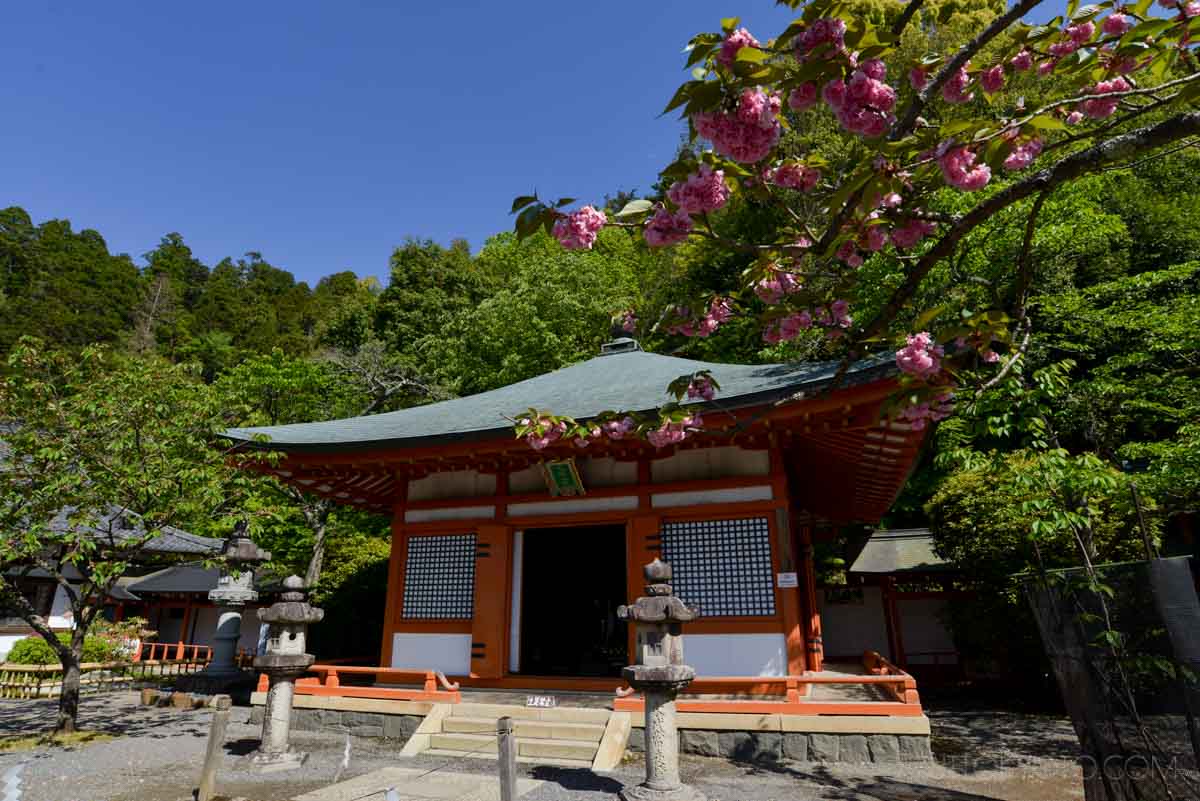
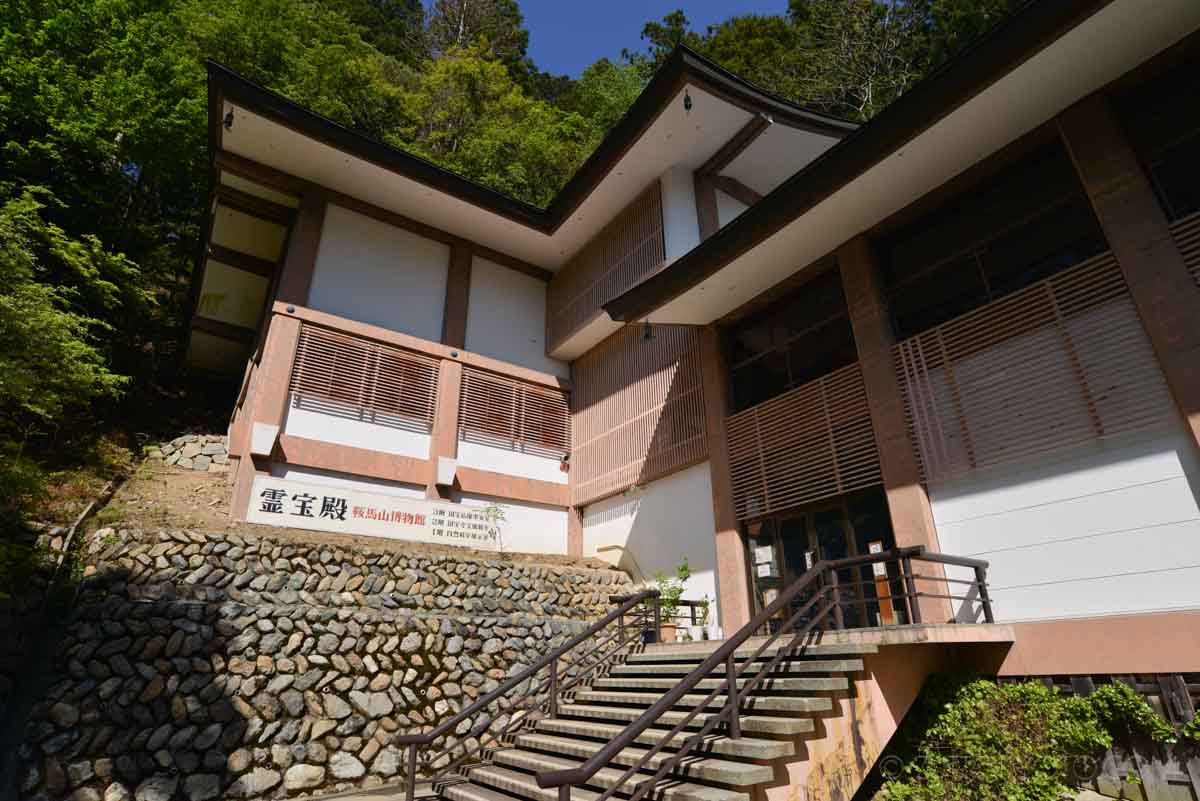
The road ahead is called Kononemichi, and the roots of trees are stretched around the road.
Please watch your step when you pass this way.
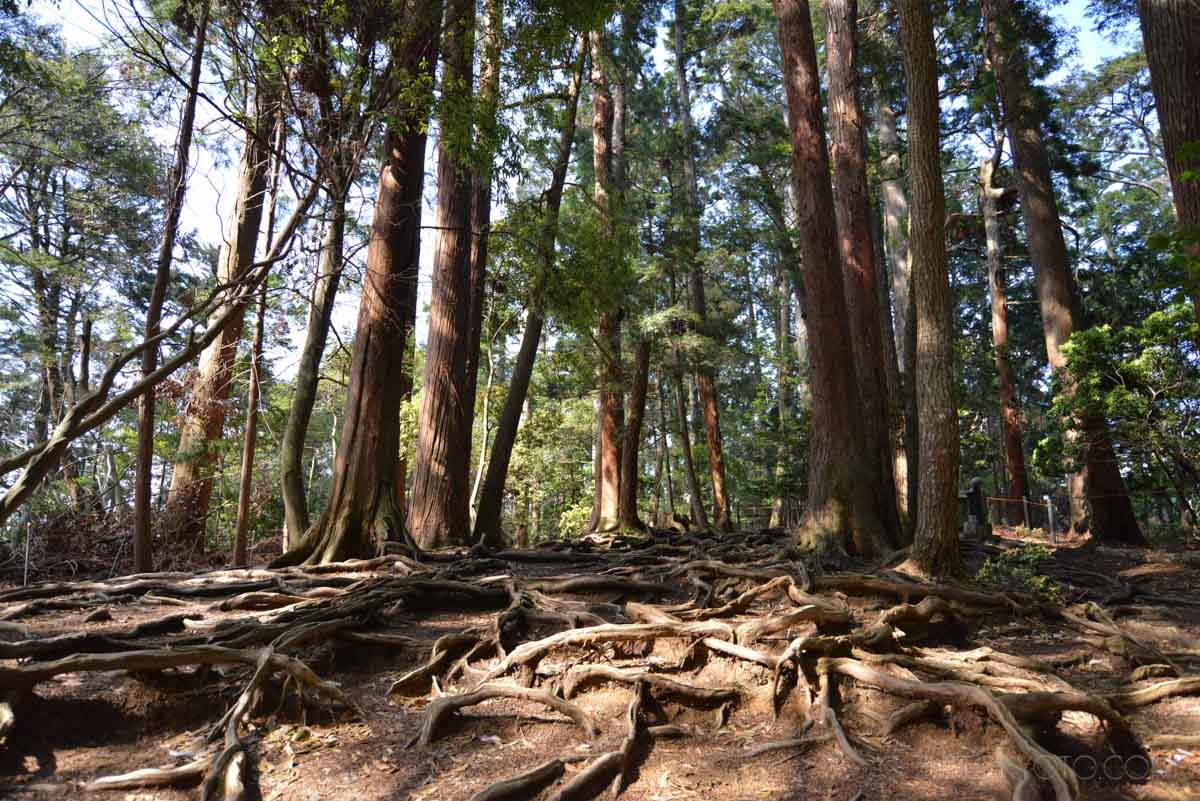
It is said that Fudo Myoo is enshrined in the Fudo Hall in Monshogadani.
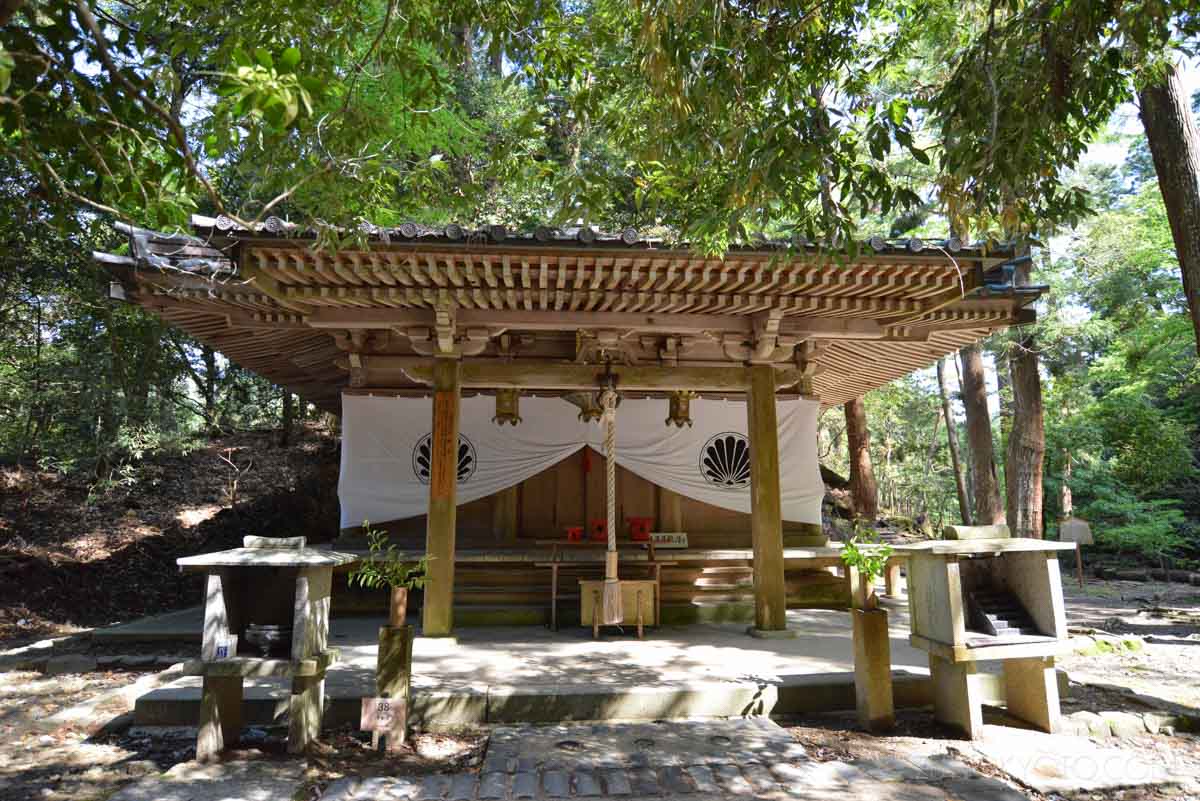
Almost at the Exit! About 800 meters left to Kibune.
Next is Oku no in Mao-den.
It is said that it enshrines Goho Maoson that came to earth from Venus 6.5 million years ago.
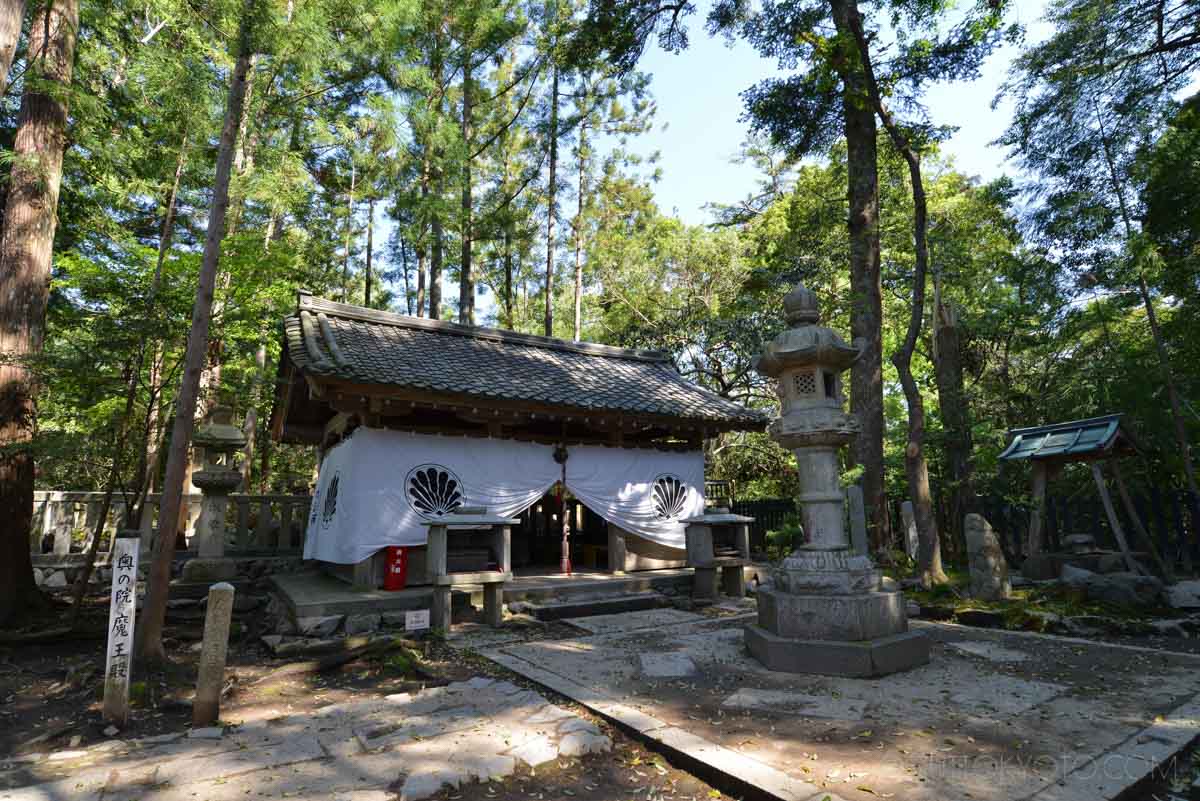
I had been walking for a while when we heard the sound of water coming from below!
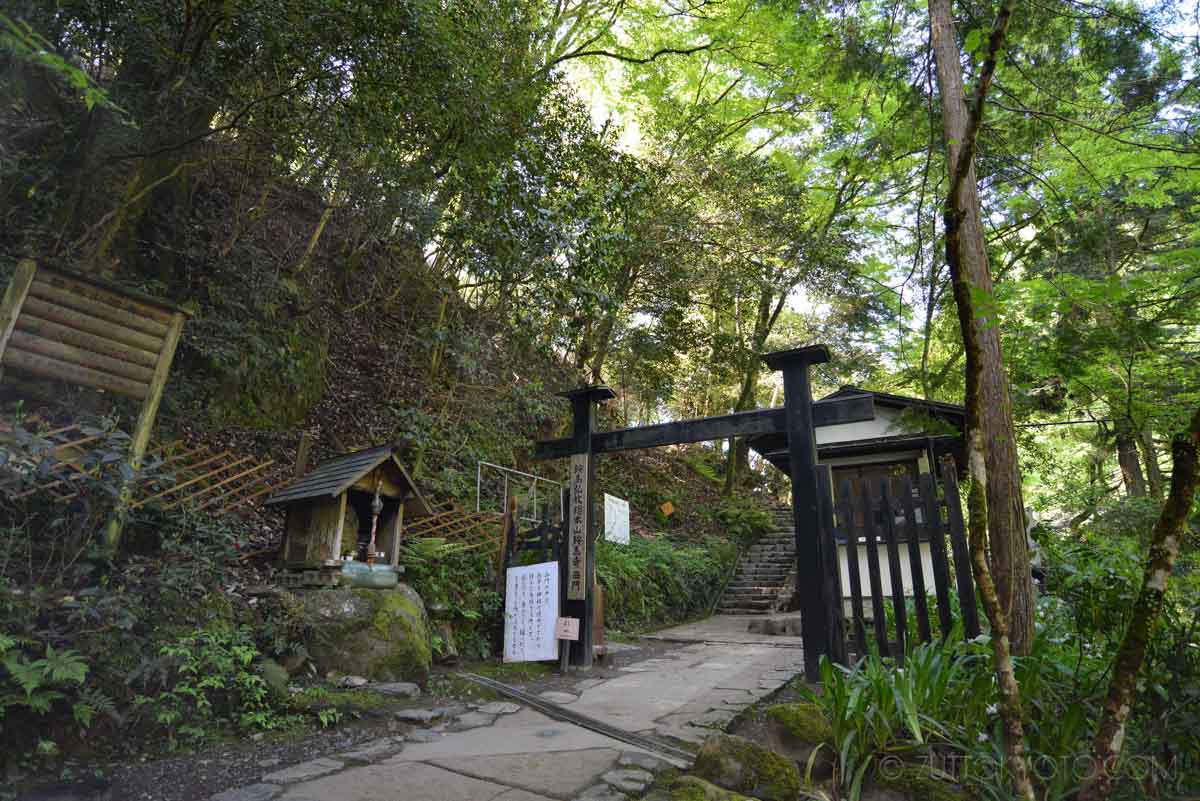
Kibune is almost here. This is the west gate of Mt. Kurama,
and this is the end of the Mt. Kurama to Kibune mountain crossing.
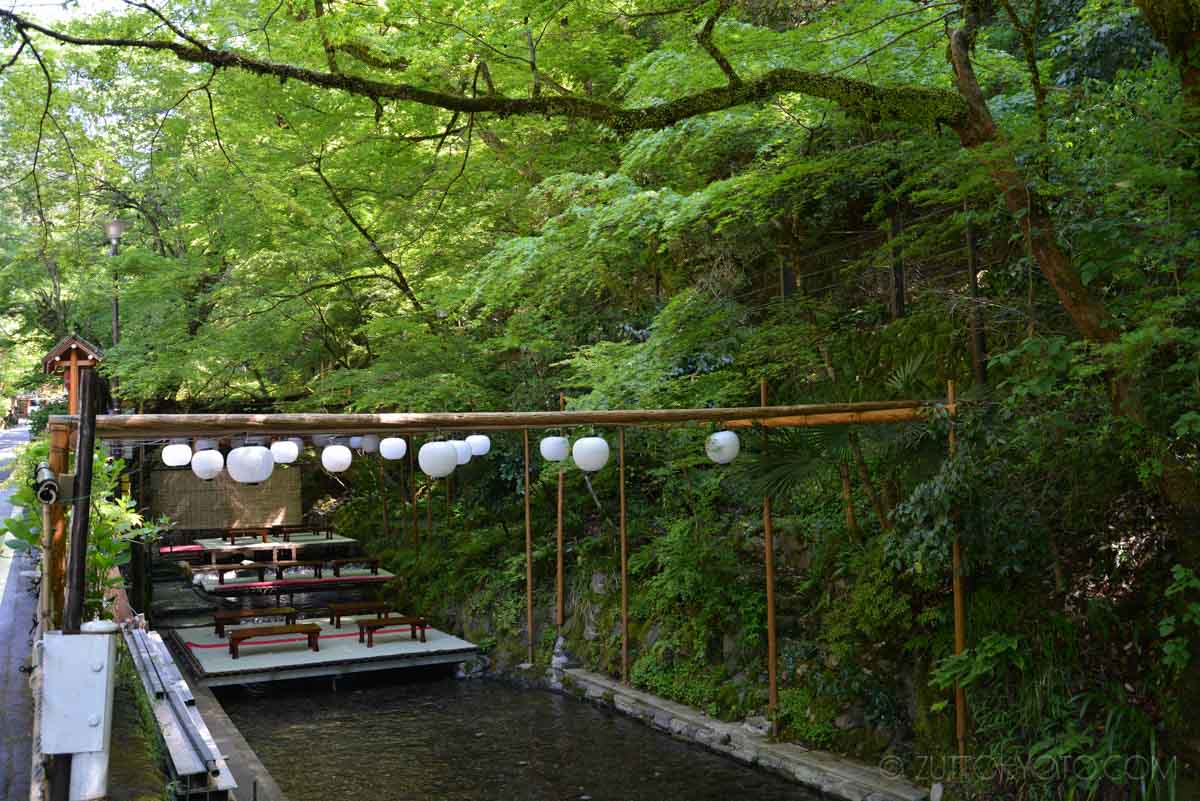
The murmur of the river is soothing.
It’s the river just outside the exit.
There is also a riverbed! Kawadoko (川床) is a Japanese-style restaurant where
you can enjoy kaiseki ryori (Kawadoko dishes) in a tatami room on the river. It is also called a floor ”Yuka”.
It is expensive, but I think it will be a good memory of your trip!
By the way, you can enjoy the riverbed from May to the end of September.
It depends on the store, so please check in advance. The sound of water and the cool air felt very good.
By the way, the temperature in this area on the mountain is 2 ~ 3 degrees different from that in the center of Kyoto,
and the riverbed feeling the natural air conditioner is popular among tourists, so many people have visited since this time.
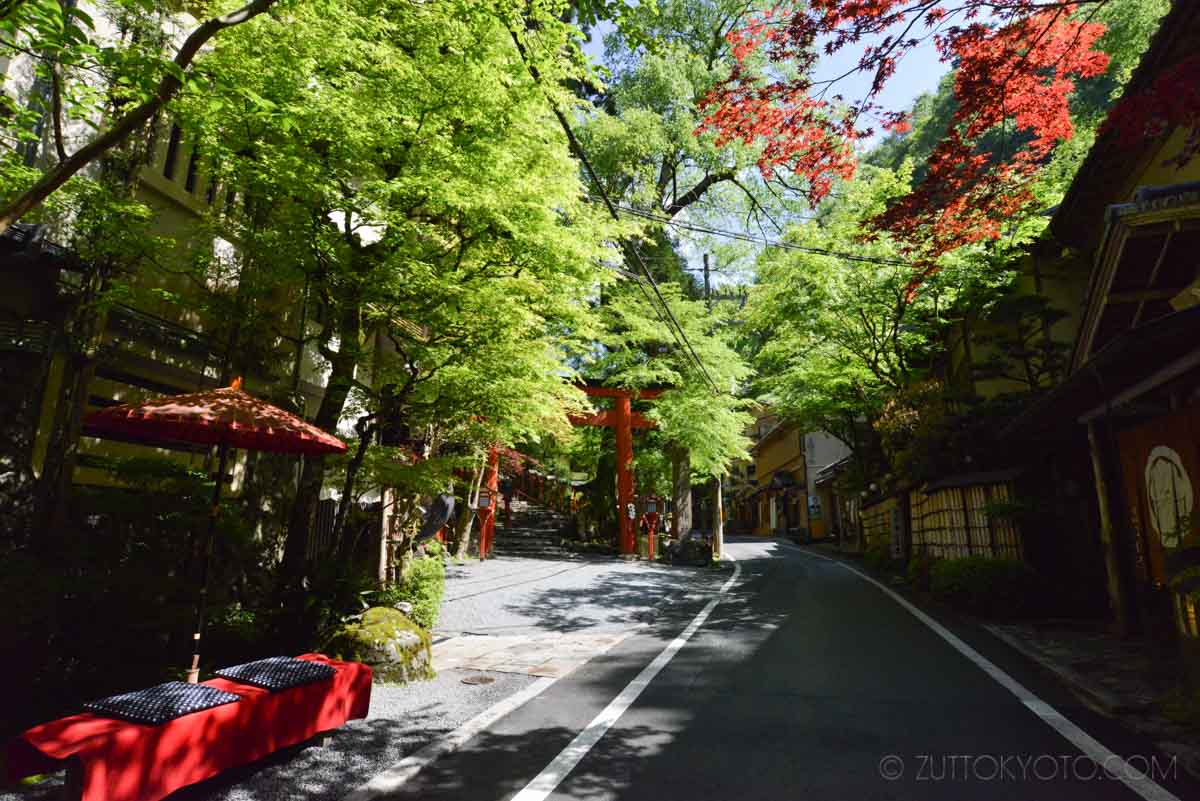
Kibune Shrine
Now, we are going to Kifune Shrine. Nature feels so good! The long-established riverbed shop blends in with nature and has a very good atmosphere.
Do you remember the place in the picture below? This scenery,
which is often seen in the media such as special articles on Kyoto and magazines,
is the approach to Kibune Shrine.
On the left and right is a Kasuga lantern with a beautiful contrast of green and red!
This place is a very beautiful place with blue colored leaves in spring and summer,
red colored leaves in autumn and snowy scenery in winter.
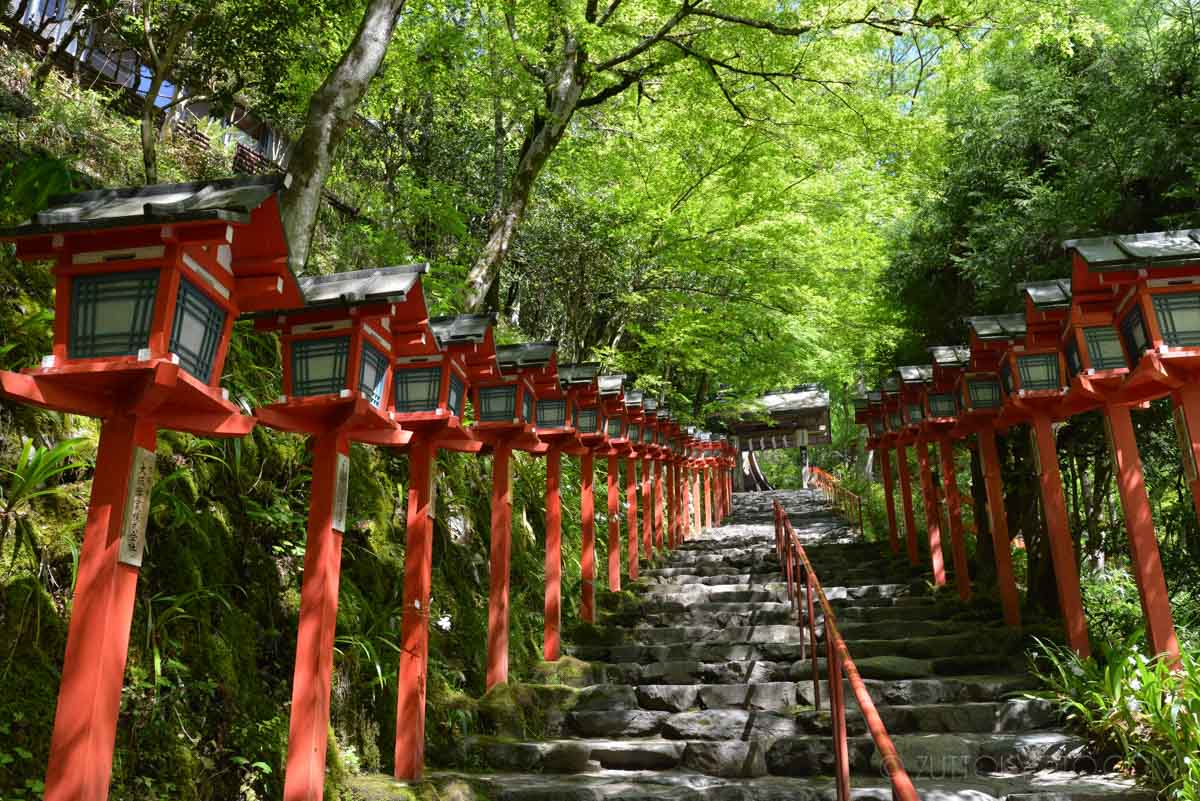
Located at the foot of the Kibune River and at the source of the Kamo River, the Kibune Shrine (貴船神社)
has been worshiped since ancient times as the god of water that protects the water source of Kyoto.
This is the main shrine. The shrine was originally located in the current Okumiya,
but it was washed away by a flood of the Kibune-gawa River and moved to its current location in 1055.
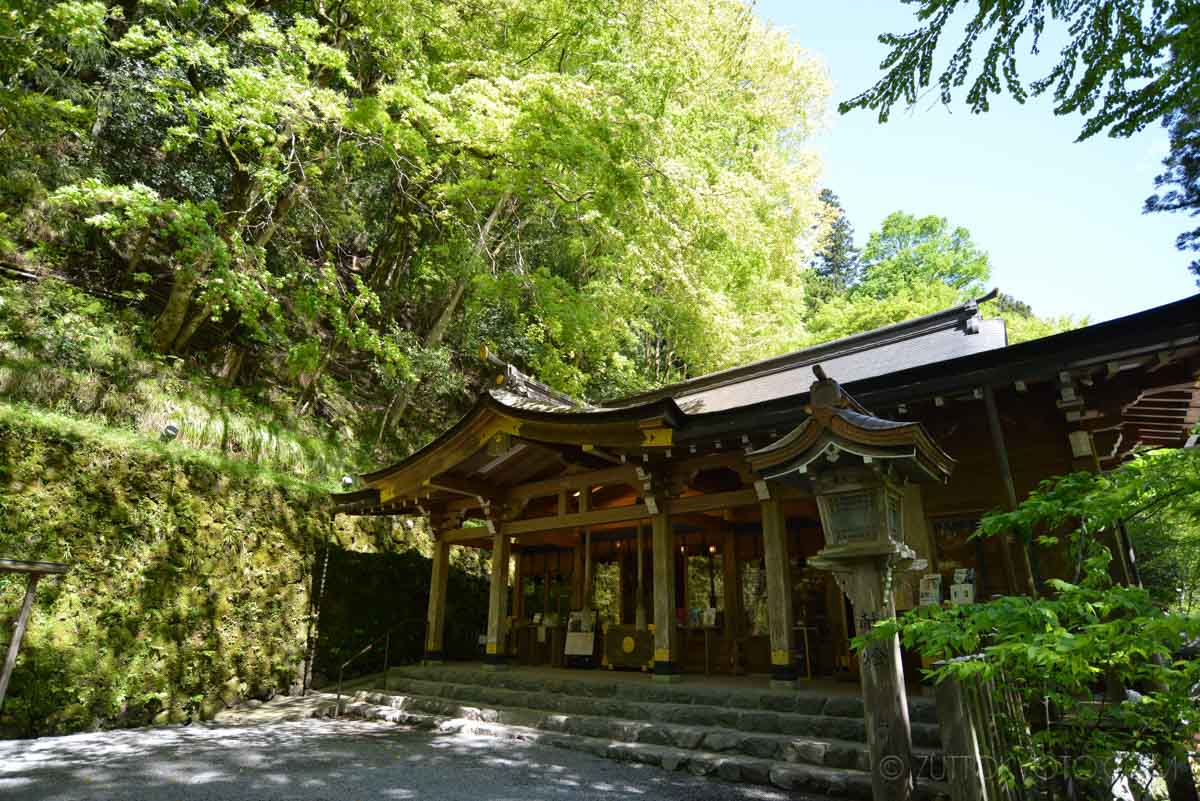
It is said that the year of the foundation of Kifune-jinja Shrine is unknown,
but according to the shrine’s biography, she was the mother of Emperor Jinmu.
It is said that Tamayorihime (Tamayorihime) built a hokora on the site going up the Yodo-gawa River,
the Kamo-gawa River and the Kibune-gawa River in search of a water source.
Kibune-jinja Shrine is also said to be the birthplace of ema!
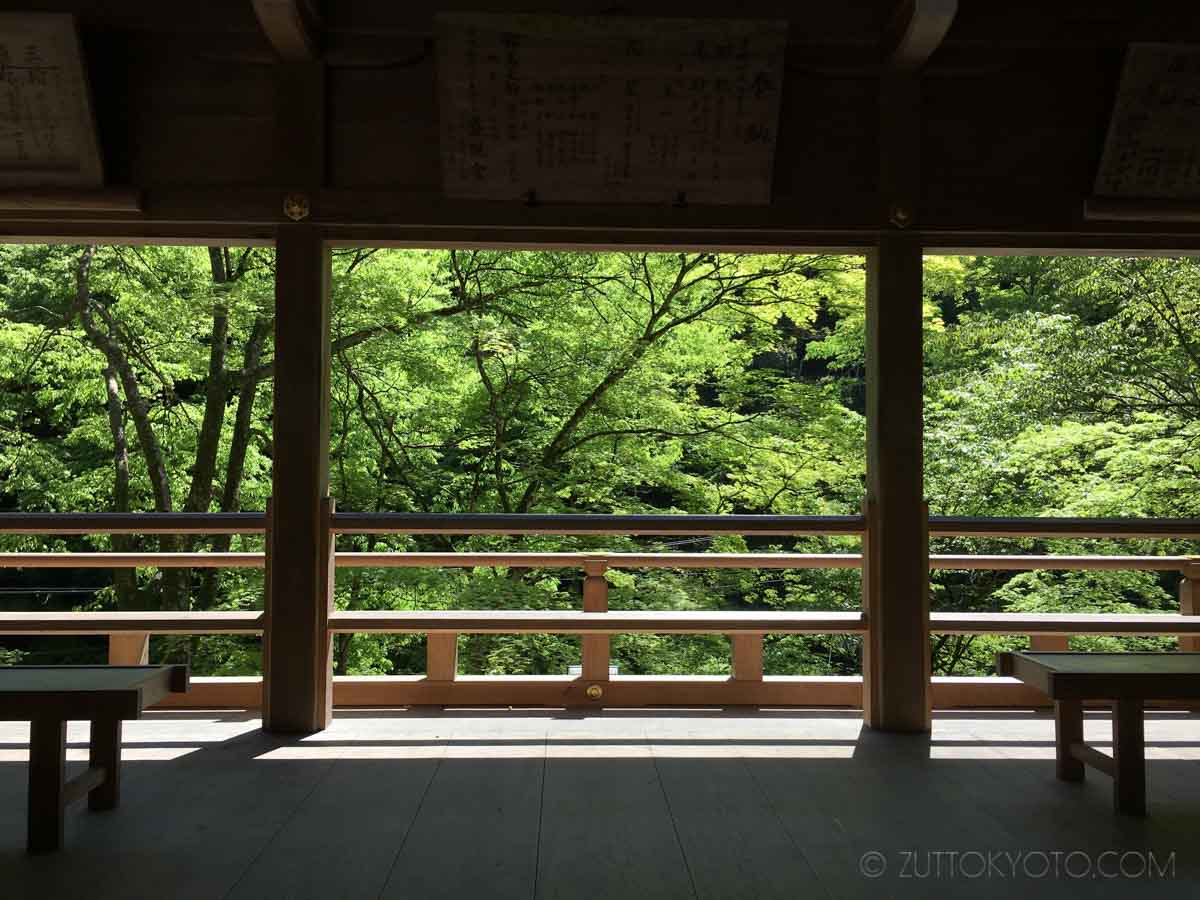
Here you can take a break and enjoy the beautiful view!
The blue leaves were very beautiful.
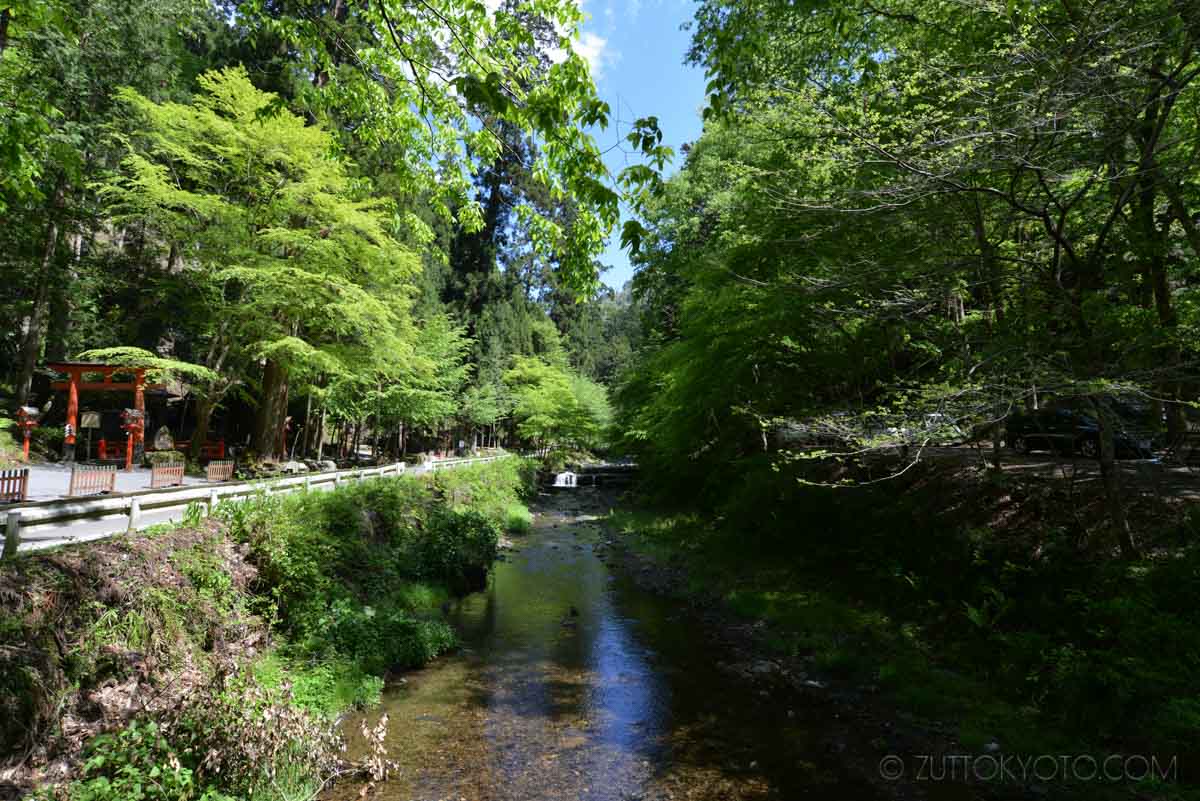
Next, let’s go to the Okunomiya of Kibune Shrine!
The Okumiya has been worshiped by sailors as “Funatama no Kami” and
(a deity who protects the safety of a voyage) since ancient times.
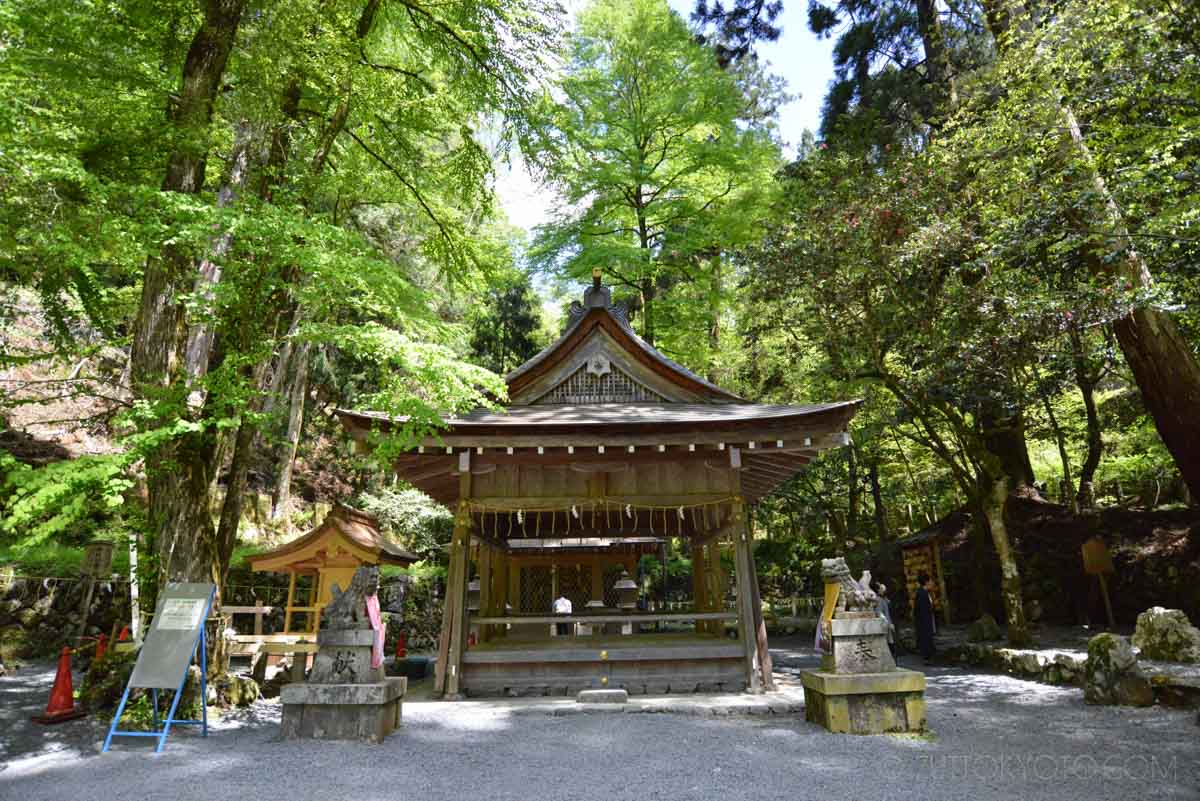
The next is the “Yui no Yashiro” of Kifune Shrine.
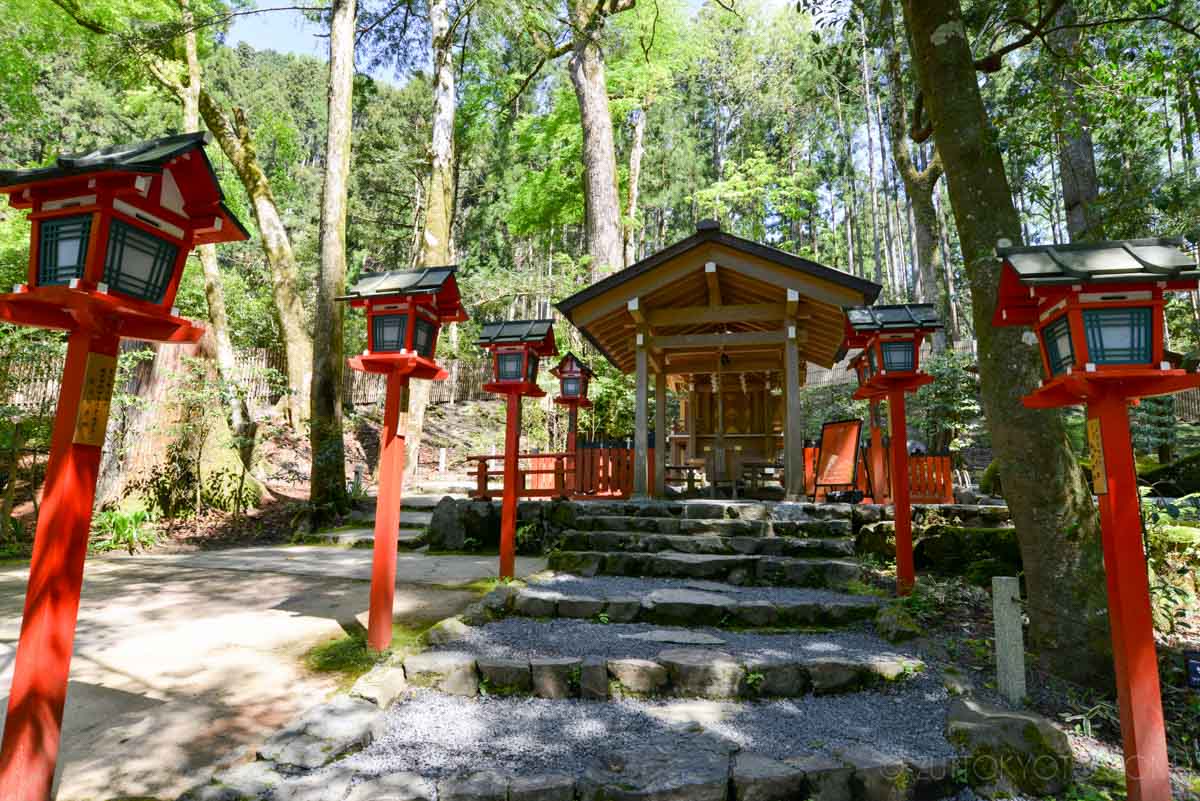
It is a famous story that Izumi Shikibu, a poet in the Heian period,
visited Kifune-jinja Shrine after worrying about her husband’s change of heart, prayed and prayed, and got married again.
It is a popular shrine for the blessing of marriage. We will head to Kibune Station slowly enjoying the nature.
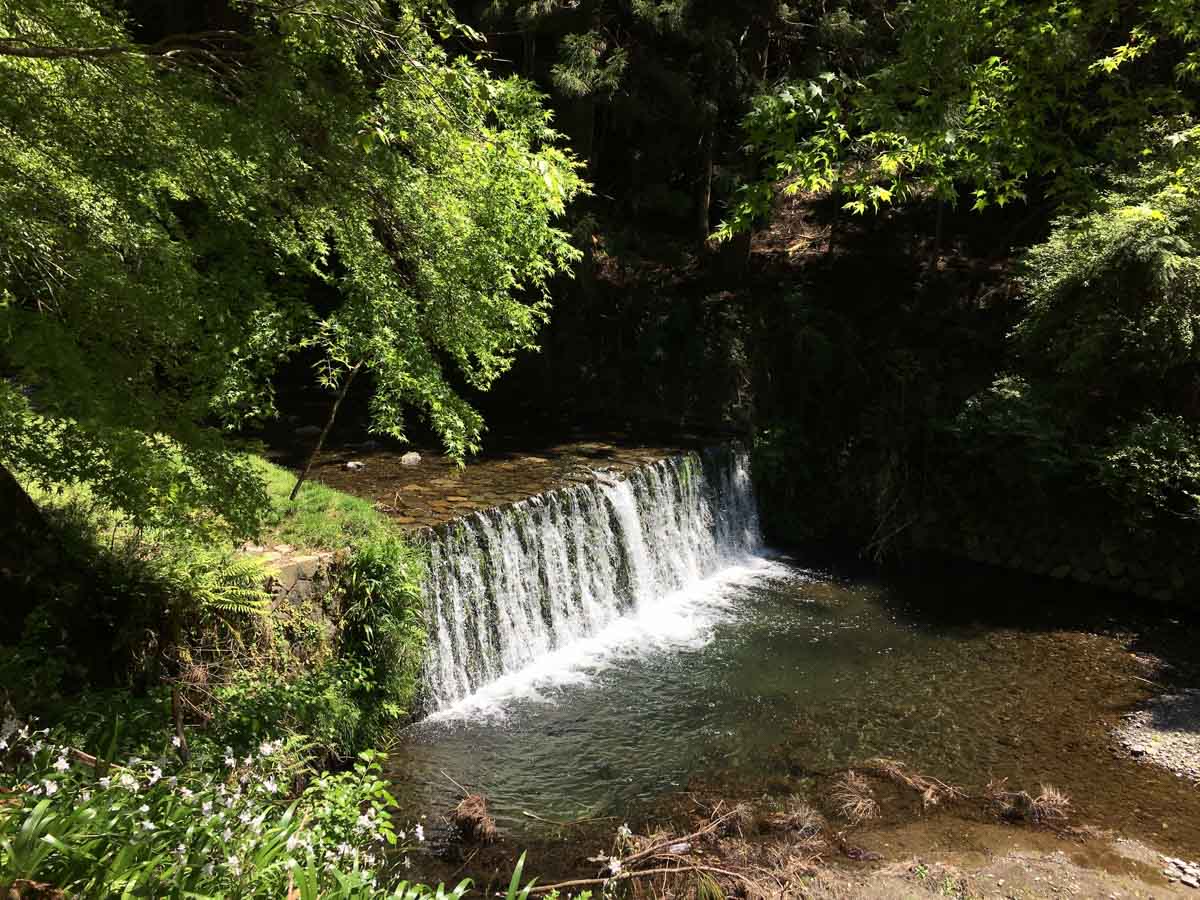
It was before 11 AM even after I finished watching all of them because
I left from the morning with lots of things to see,
such as hiking over the mountain from Mount Kurama to Kibune and visiting Kibune Shrine.
By the way, I guided you for a long time. How was the hiking course from Mount Kurama to Kibune?
Mount Kurama, where Ushiwakamaru trained, and Kibune Shrine, which is famous for matchmaking,
are surrounded by nature, so you can enjoy the nature of the four seasons!
Why don’t you come and see it when you come to Kyoto?
If you are hiking, please drink enough water to prevent heat stroke.
Also, please note that there are no vending machines or shops on the way over the mountain.
Then, I will summarize Mount Kurama and Kibune.
Q: What is the recommended access to Kurama Kibune?
A:It is convenient to change trains between Keihan Electric Railway and Eizan Electric Railway.
Q: When do you recommend?
A:I recommend it because early summer is not too cold and the weather is suitable for hiking. The autumn leaves are also very beautiful.
Q: Is there a place to eat?
A:Kawayuka (Kawa-doko), a summer feature on Kibune, is a Kyoto specialty. I think it will be a good souvenir of your trip.
*Information: May 2019 Final New Month: May 2020 Information is subject to change.
Please check by yourself when you go. This site assumes no responsibility for information changes.
